Creating compelling restaurant interior design requires balancing aesthetic appeal with functional efficiency to enhance the dining experience. Today's restaurant designs must reflect brand identity while adapting to evolving customer expectations for memorable, Instagram-worthy spaces. From biophilic gardens to industrial chic, successful restaurant interior design seamlessly integrates lighting, materials, seating arrangements, and ambiance to create environments that encourage longer stays and repeat visits.
1. Modern Minimalist Restaurant Interior Design
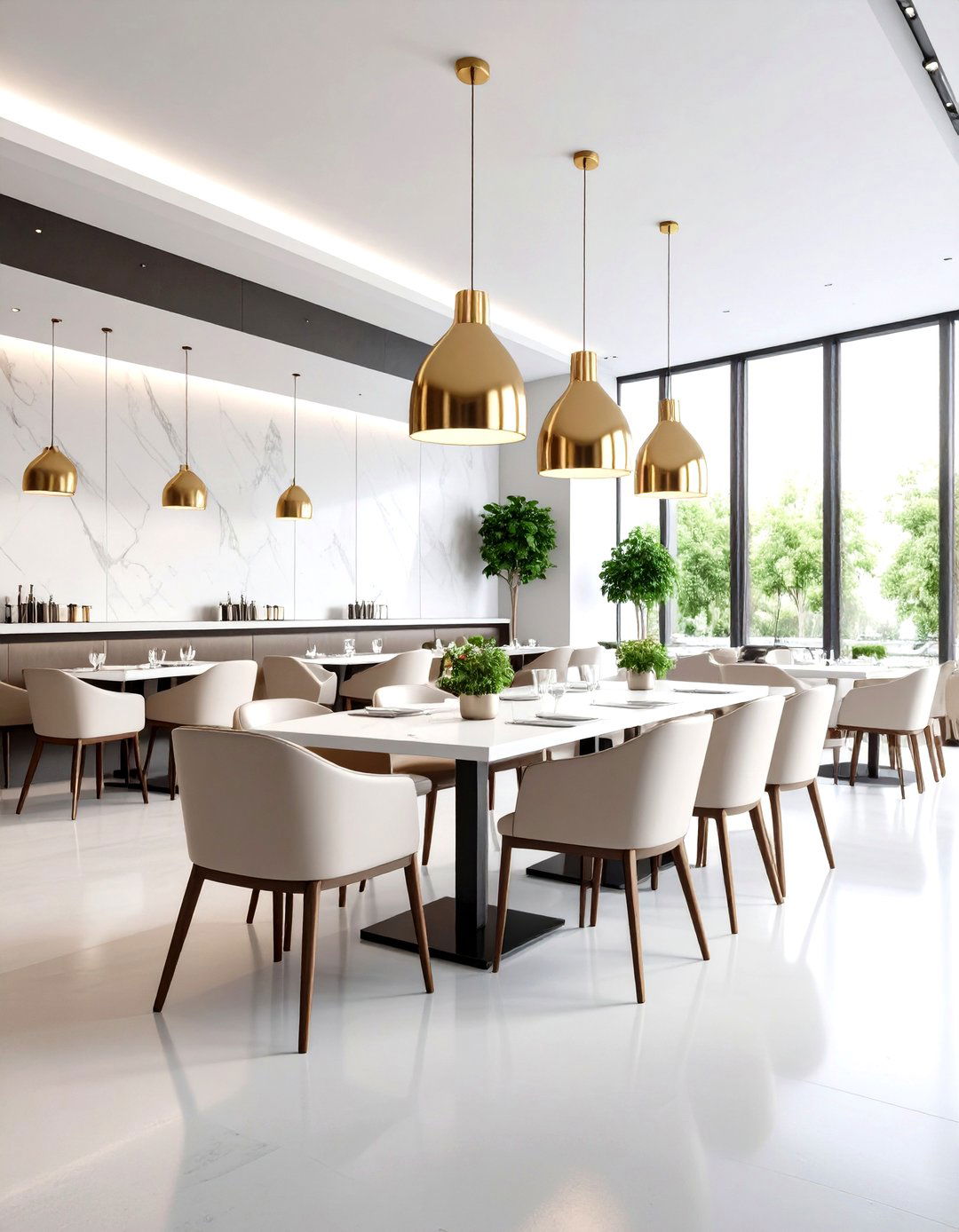
Contemporary minimalist restaurant interior design emphasizes clean lines, uncluttered spaces, and a sophisticated neutral palette to create an atmosphere of refined elegance. This approach features sleek furniture with sharp edges, polished concrete floors, and expansive white or light-colored walls that serve as neutral backdrops for carefully curated artwork. The lighting strategy combines natural illumination from floor-to-ceiling windows with strategically placed pendant fixtures and subtle accent lighting. Seating arrangements incorporate streamlined banquettes and geometric chairs in materials like brushed steel and premium leather. The color scheme remains deliberately restrained, using whites, grays, and soft earth tones with occasional metallic accents. This design philosophy allows the culinary presentation to become the focal point while providing guests with a calming, distraction-free environment that enhances their dining experience.
2. Industrial Restaurant Interior Design
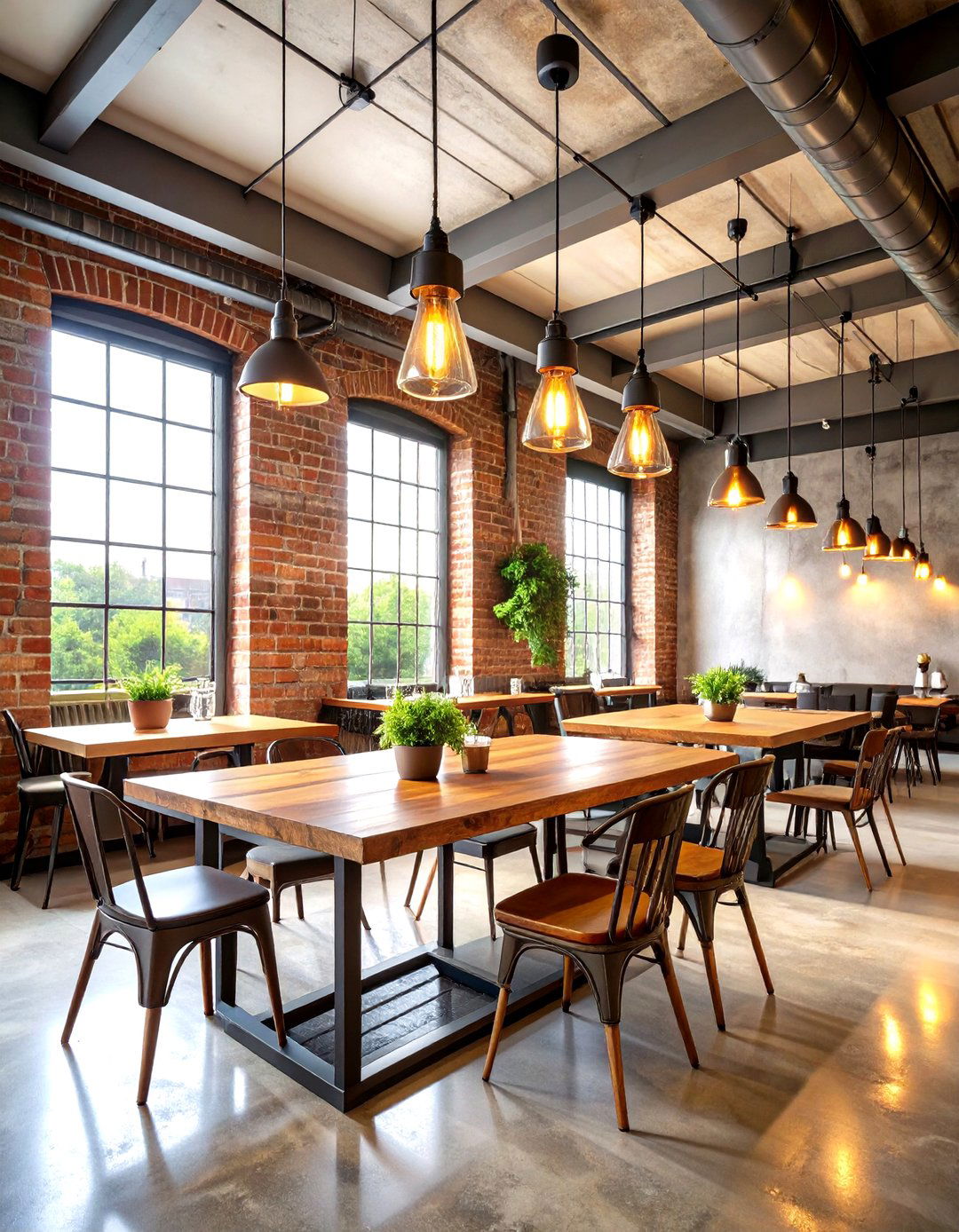
Industrial restaurant interior design transforms raw, utilitarian elements into sophisticated dining environments that celebrate the beauty of exposed structural components and weathered materials. This comprehensive approach showcases exposed brick walls, concrete floors, and visible ductwork painted in dark tones, creating an authentic warehouse aesthetic. The furniture combines reclaimed wood tabletops with blackened steel frames, complemented by vintage-inspired metal chairs and leather banquettes with distressed finishes. Lighting becomes a statement feature through oversized pendant fixtures, Edison bulb installations, and track lighting that highlights the architectural elements. The color palette emphasizes warm neutrals, deep grays, and rich browns, punctuated by strategic use of amber and copper accents. Large windows flood the space with natural light during the day, while warm artificial lighting creates intimate evening ambiance. This design celebrates the marriage of function and form, creating spaces that feel both urban and welcoming.
3. Rustic Farmhouse Restaurant Interior Design
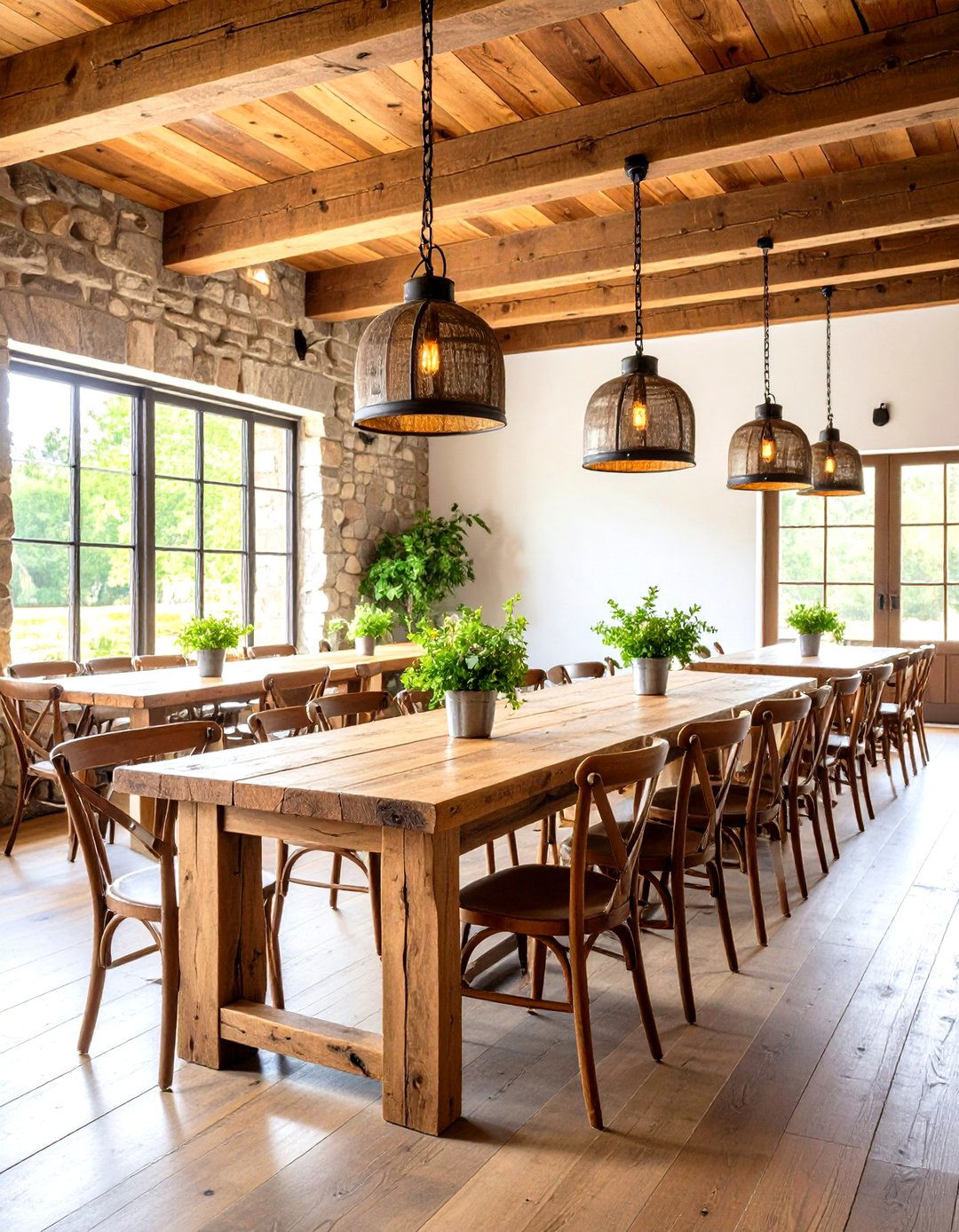
Rustic farmhouse restaurant interior design creates warm, inviting spaces that evoke the comfort and authenticity of countryside dining through natural materials and traditional craftsmanship. This design approach features reclaimed wood beams, stone accent walls, and distressed hardwood flooring that tells stories of age and character. The furniture selection emphasizes handcrafted wooden tables with visible grain patterns, complemented by mismatched vintage chairs and cushioned benches that encourage relaxed, communal dining. Lighting incorporates wrought iron chandeliers, mason jar fixtures, and warm-toned pendant lights that create pools of intimate illumination. The color scheme draws from nature's palette, featuring warm browns, forest greens, and cream tones accented with touches of deep red and gold. Decorative elements include antique farm tools, vintage signage, and potted herbs that reinforce the agricultural theme. This design creates an atmosphere where guests feel like they're dining in a beloved family farmhouse, encouraging longer stays and meaningful conversations.
4. Biophilic Restaurant Interior Design
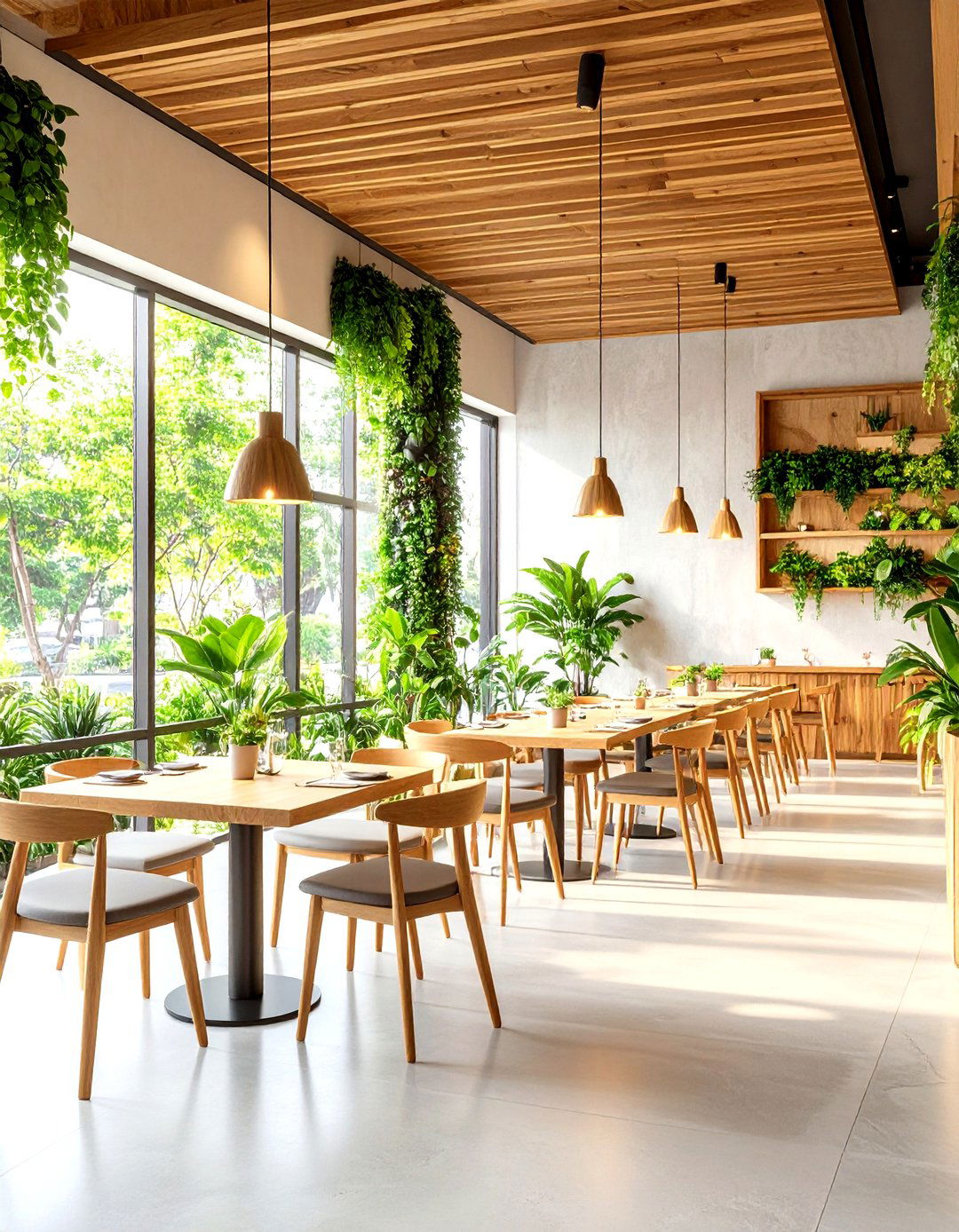
Biophilic restaurant interior design seamlessly integrates natural elements to create healing, restorative dining environments that reconnect guests with the natural world while they dine. This comprehensive approach features living walls with diverse plant species, natural stone surfaces, and water features that provide both visual and auditory connections to nature. The furniture selection emphasizes organic forms with curved edges, sustainable materials like bamboo and reclaimed wood, and earth-toned upholstery that complements the natural palette. Lighting maximizes natural illumination through strategically placed skylights and floor-to-ceiling windows, supplemented by warm LED systems that mimic natural light patterns throughout the day. The color scheme draws inspiration from forest environments, featuring various shades of green, brown, and earth tones with accents of sky blue and sunset orange. Air circulation systems incorporate natural ventilation where possible, while the spatial design creates flowing, organic layouts that mirror patterns found in nature. This design reduces stress, improves air quality, and creates memorable dining experiences that feel like retreats into natural sanctuaries.
5. Vintage Retro Restaurant Interior Design
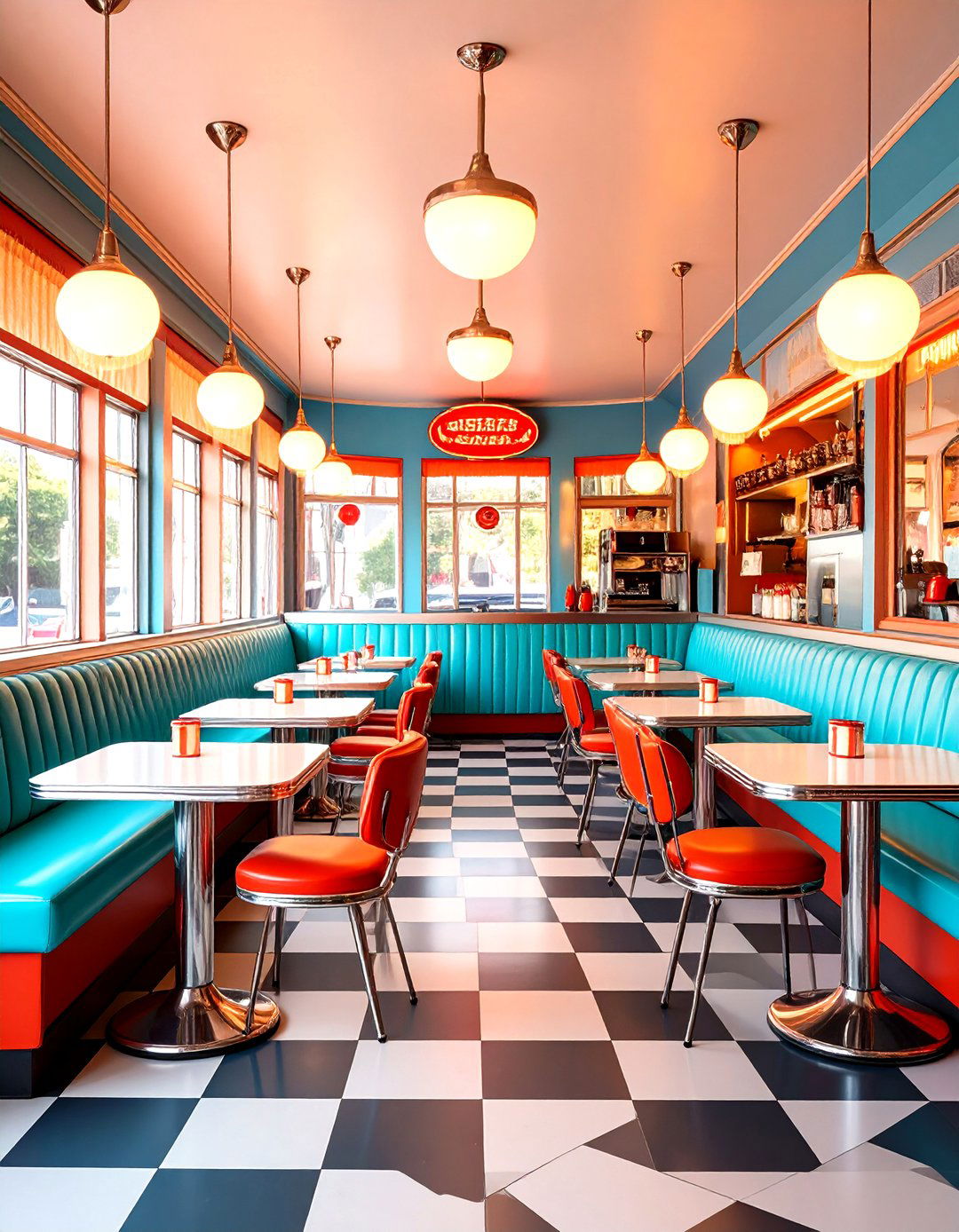
Vintage retro restaurant interior design celebrates the nostalgia of mid-century aesthetics through carefully curated period-appropriate elements that transport guests to simpler times. This design approach features classic diner elements like checkerboard floors, vinyl banquettes in bold colors, and chrome fixtures that gleam under period-appropriate lighting. The furniture selection emphasizes iconic mid-century pieces including tulip chairs, boomerang tables, and curved booth seating upholstered in leather or vinyl in vibrant hues like turquoise, red, and yellow. Lighting incorporates neon signage, pendant lights with colorful shades, and retro-style fixtures that create dramatic focal points throughout the space. The color palette embraces the bold contrasts popular in the 1950s and 1960s, featuring bright primary colors balanced with black, white, and metallic accents. Decorative elements include vintage advertising posters, jukebox installations, and period-appropriate artwork that reinforces the nostalgic atmosphere. This design creates playful, energetic environments that encourage social interaction and photo sharing while delivering comfort food in authentically styled settings.
6. Mediterranean Restaurant Interior Design
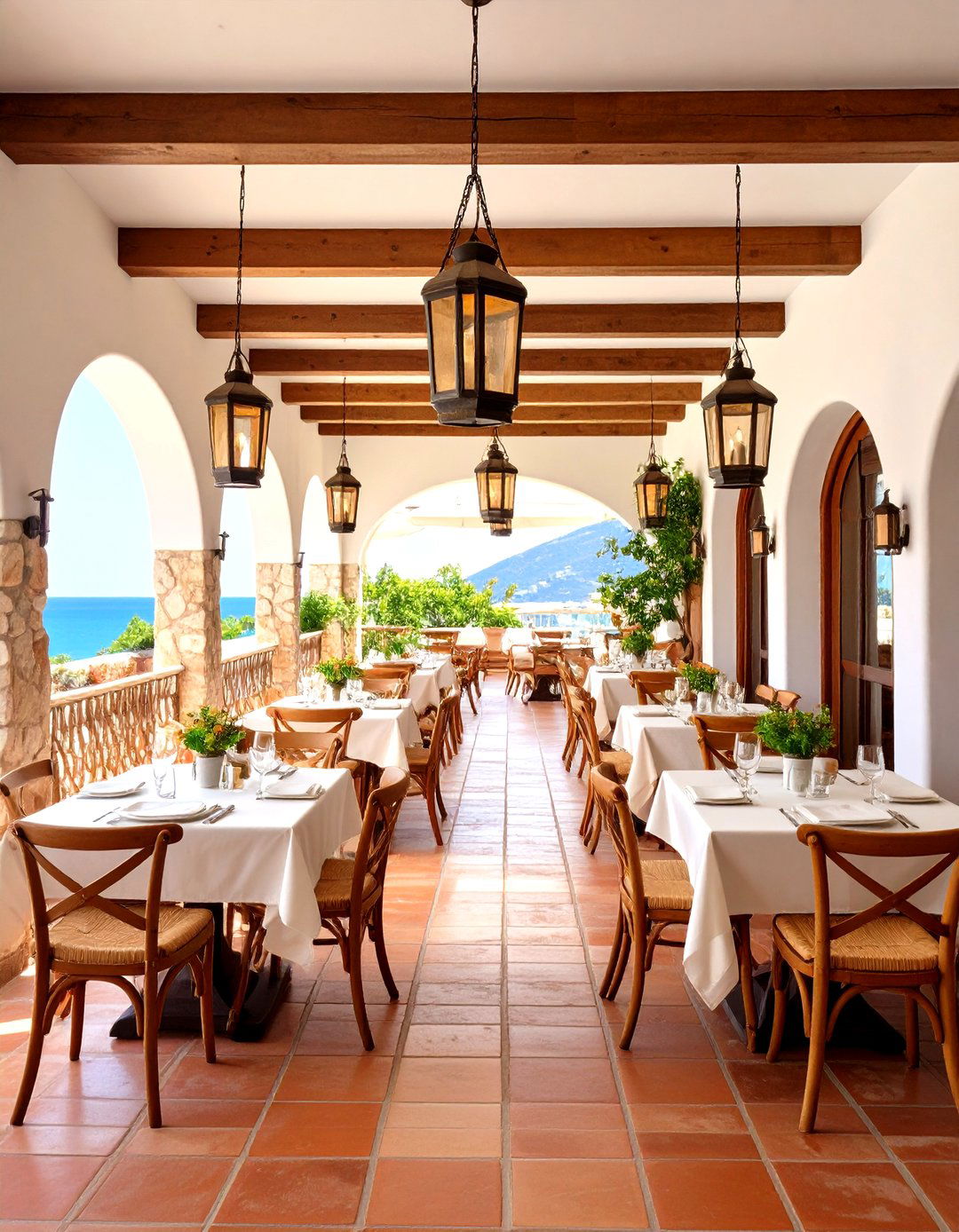
Mediterranean restaurant interior design captures the warmth and sophistication of coastal European dining through natural materials, warm color palettes, and architectural elements that evoke seaside villages. This comprehensive approach features terracotta tile floors, whitewashed walls with exposed wooden beams, and stone accents that create authentic Mediterranean ambiance. The furniture selection emphasizes wrought iron chairs with comfortable cushions, rustic wooden tables with distressed finishes, and built-in banquettes with colorful tile work. Lighting incorporates lantern-style fixtures, candles in hurricane glass, and string lights that create romantic, intimate atmosphere reminiscent of outdoor Mediterranean dining. The color scheme draws from the Mediterranean landscape, featuring warm whites, ocean blues, olive greens, and terracotta oranges with gold and bronze accents. Decorative elements include ceramic pottery, woven textiles, and Mediterranean plants like lavender and rosemary that engage multiple senses. This design creates sophisticated yet relaxed environments that encourage leisurely dining and social gatherings while celebrating the rich cultural heritage of Mediterranean cuisine.
7. Asian Fusion Restaurant Interior Design

Asian fusion restaurant interior design blends traditional Eastern aesthetics with contemporary elements to create sophisticated spaces that honor cultural heritage while appealing to modern sensibilities. This design approach features natural materials like bamboo, dark wood, and stone, complemented by clean lines and minimalist principles derived from Japanese and Chinese design philosophies. The furniture selection emphasizes low-profile seating, communal tables for shared dining experiences, and private booth areas with sliding screens that provide intimacy. Lighting incorporates paper lanterns, backlit panels, and strategic spotlighting that creates dramatic shadows and highlights architectural details. The color palette features warm neutrals, deep browns, and black accents with touches of red, gold, and jade green that reference traditional Asian color schemes. Decorative elements include carefully placed artwork, bonsai displays, and water features that create tranquil focal points. This design creates serene, contemplative environments that encourage mindful dining while celebrating the artistry and philosophy of Asian cultures through thoughtful spatial arrangements and authentic materials.
8. Open Kitchen Restaurant Interior Design
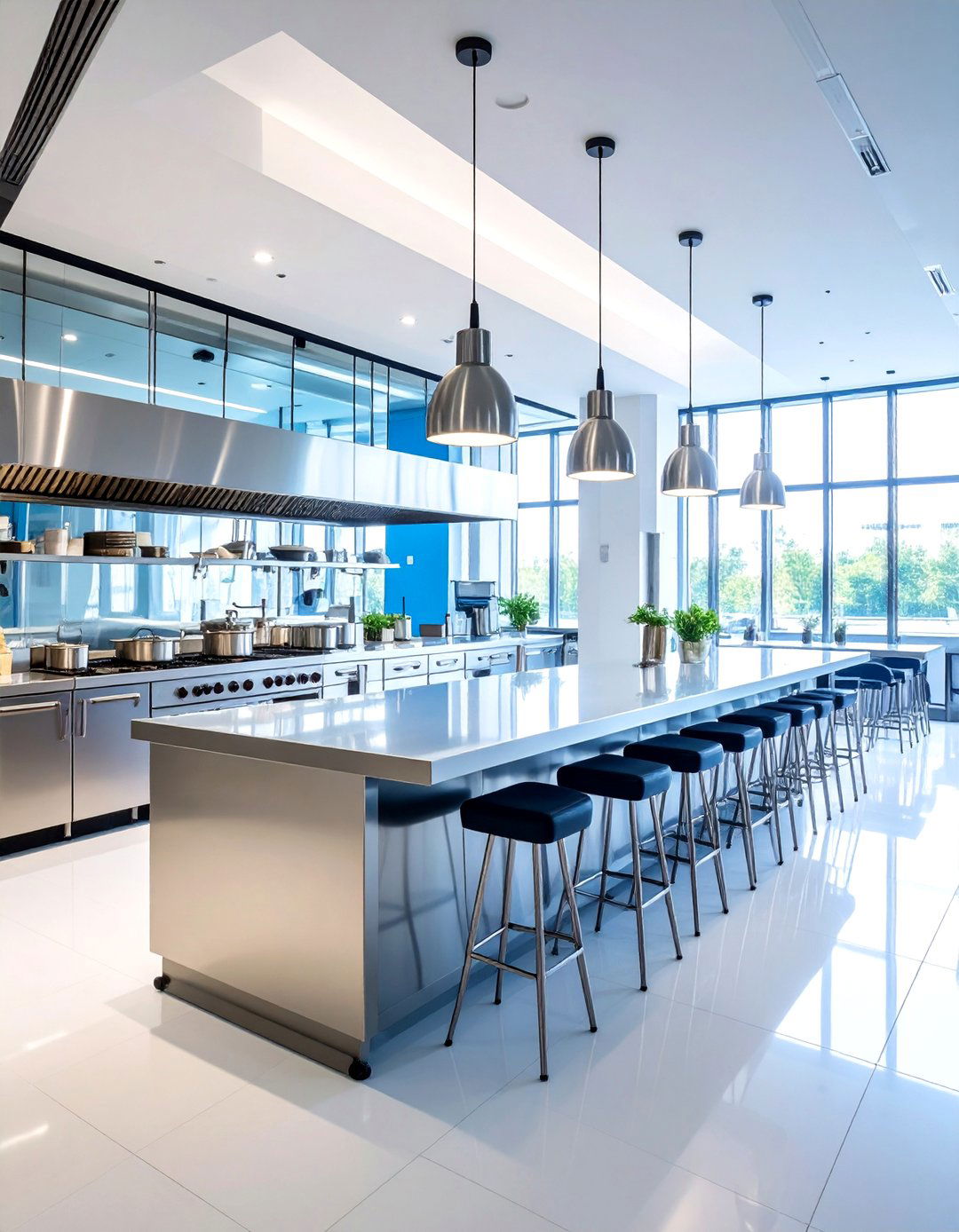
Open kitchen restaurant interior design transforms cooking spaces into theatrical performances, creating transparency and engagement between chefs and diners while maintaining sophisticated aesthetics. This comprehensive approach features glass partitions or completely open layouts that showcase culinary artistry, professional-grade equipment, and the choreography of kitchen operations. The furniture selection emphasizes chef's counter seating with comfortable stools, strategically placed dining tables that offer kitchen views, and banquette seating that provides both comfort and optimal sightlines. Lighting incorporates professional kitchen illumination, dramatic pendant fixtures over dining areas, and accent lighting that highlights the culinary theater. The color scheme balances the stainless steel and industrial elements of the kitchen with warm dining area tones, featuring neutral backgrounds with colorful accents that complement both food presentation and kitchen aesthetics. Ventilation systems ensure optimal air quality while maintaining the open concept. This design creates interactive dining experiences where guests become part of the culinary journey, building trust and excitement through transparency while celebrating the artistry of professional cooking.
9. Communal Dining Restaurant Interior Design
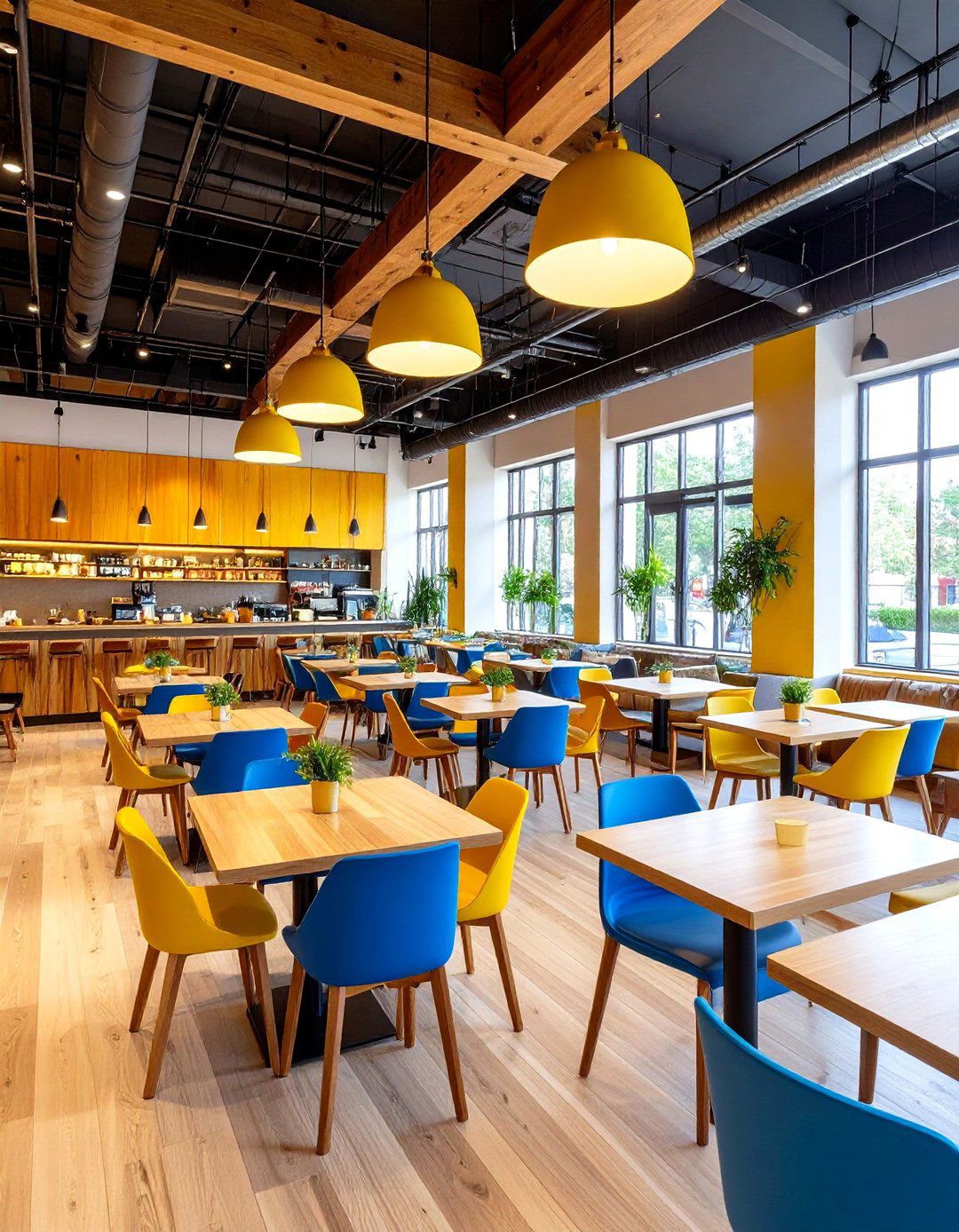
Communal dining restaurant interior design fosters social connection and shared experiences through large-scale seating arrangements and open layouts that encourage interaction between strangers and friends alike. This design approach features substantial wooden tables that accommodate multiple parties, bench-style seating that promotes conversation, and open floor plans that create energetic, bustling atmospheres. The furniture selection emphasizes long tables with mixed seating options, comfortable bench seating with back support, and high-top communal tables that facilitate casual interactions. Lighting incorporates warm overhead fixtures that illuminate entire table surfaces, pendant lights that create intimate zones within larger spaces, and ambient lighting that encourages lingering. The color scheme features warm, welcoming tones that promote comfort and social ease, including rich browns, warm grays, and accent colors that energize the space. Acoustic design elements include sound-absorbing materials and strategic layout planning that manages noise levels while maintaining the vibrant atmosphere. This design creates community-focused environments that transform dining into social experiences, encouraging new connections and celebrating the universal pleasure of sharing meals.
10. Dark Moody Restaurant Interior Design
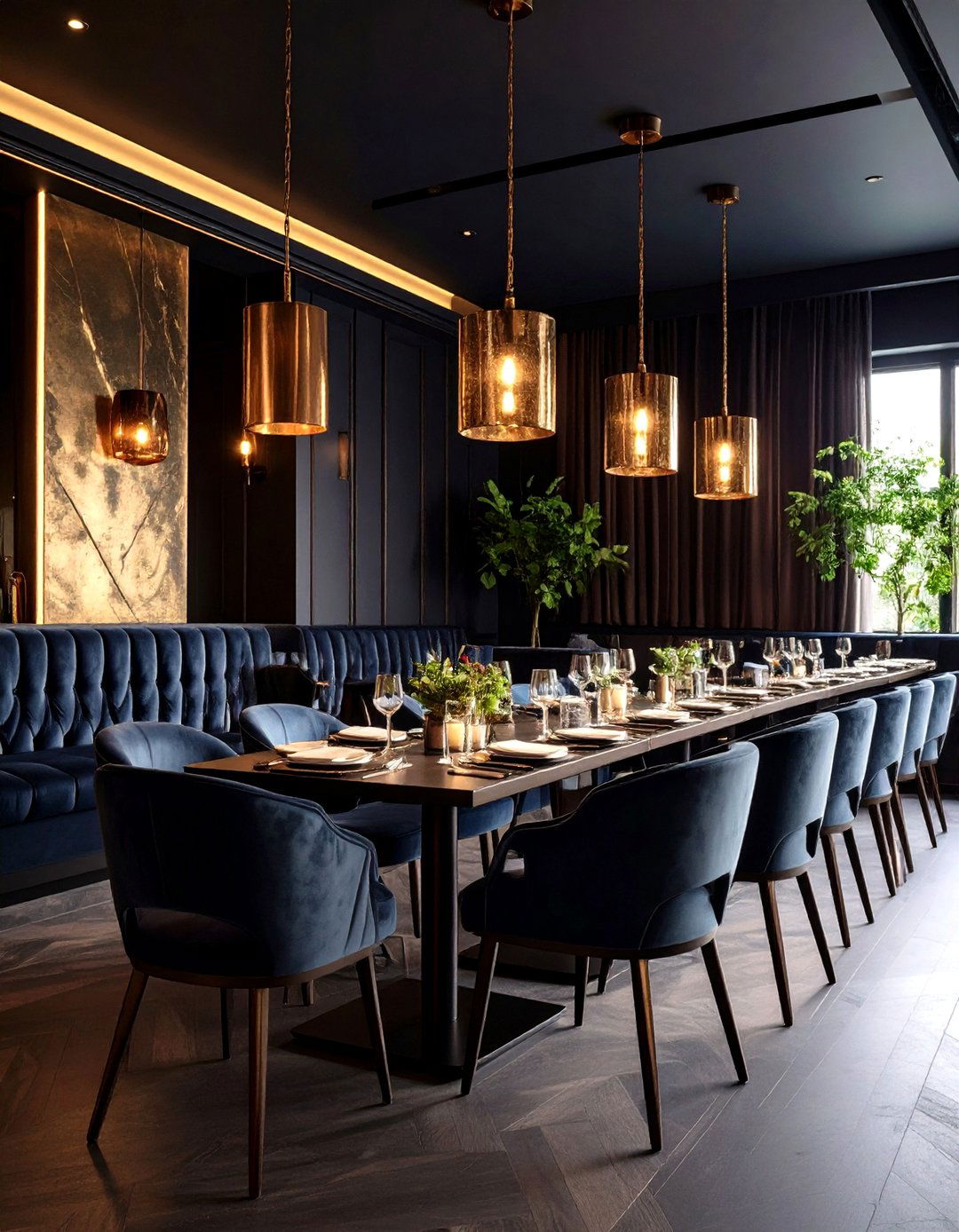
Dark moody restaurant interior design creates sophisticated, intimate atmospheres through rich color palettes, dramatic lighting, and luxurious materials that evoke exclusivity and comfort. This comprehensive approach features deep charcoal walls, dark wood finishes, and rich fabrics that absorb light and create cozy, enveloping environments. The furniture selection emphasizes plush velvet banquettes, leather chairs in deep jewel tones, and dark wood tables with rich grain patterns that complement the overall aesthetic. Lighting becomes crucial, incorporating candles, warm-toned pendant fixtures, and strategically placed accent lighting that creates pools of illumination and dramatic shadows. The color scheme features deep blues, forest greens, charcoal grays, and rich burgundy with metallic accents in gold, brass, and copper that add luxury and warmth. Decorative elements include textured wall treatments, vintage artwork, and rich textiles that reinforce the sophisticated atmosphere. This design creates exclusive, intimate environments that encourage quiet conversation and longer dining experiences while providing escape from the bright, fast-paced outside world.
11. Sustainable Restaurant Interior Design
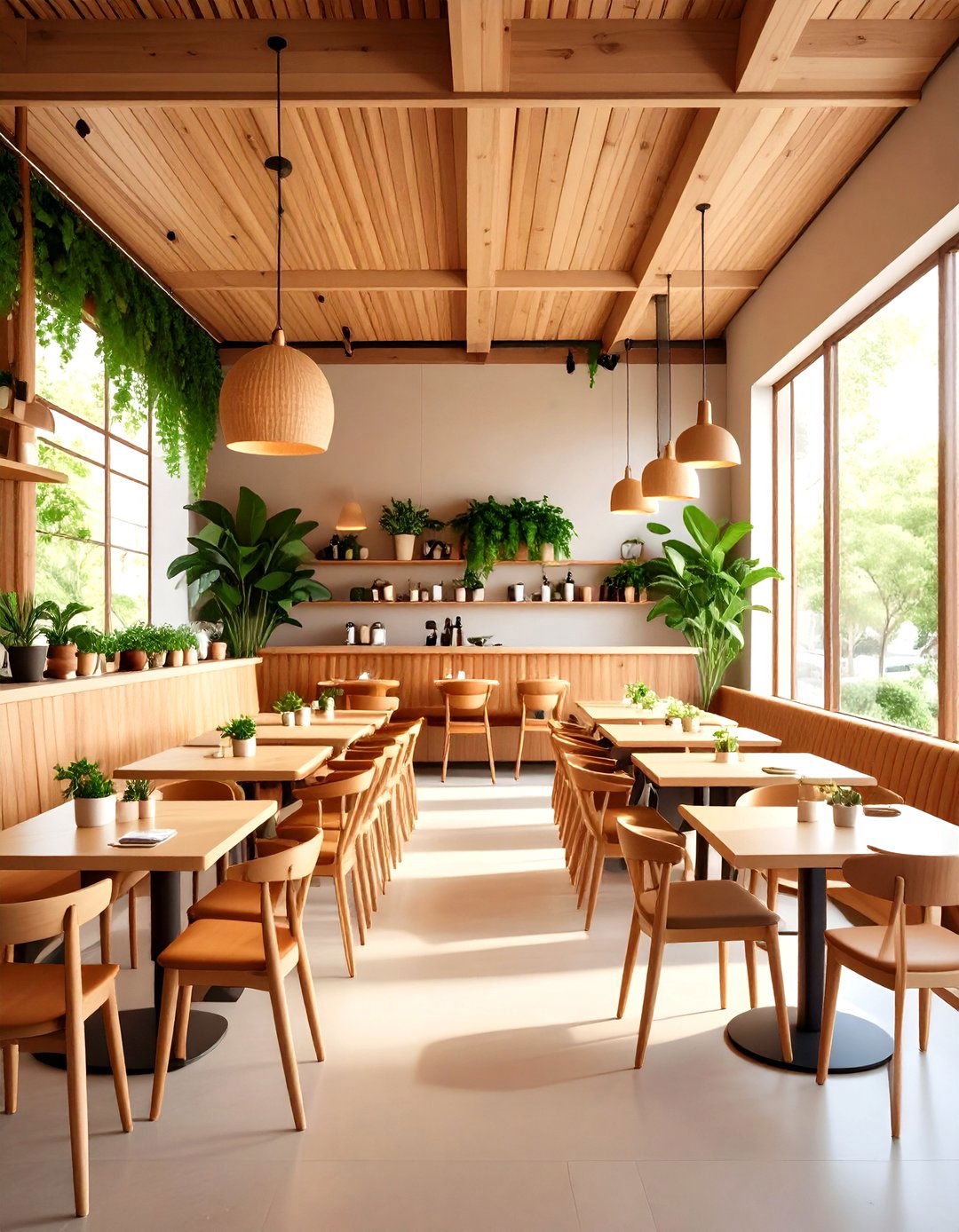
Sustainable restaurant interior design demonstrates environmental responsibility through eco-friendly materials, energy-efficient systems, and waste-reduction strategies that create beautiful spaces while minimizing environmental impact. This design approach features reclaimed and recycled materials, renewable resources like bamboo and cork, and locally sourced elements that reduce transportation emissions. The furniture selection emphasizes pieces made from sustainable materials, vintage and repurposed items, and modular designs that extend lifespan and reduce waste. Lighting incorporates LED systems with smart controls, natural light optimization through strategic window placement, and solar-powered accent lighting where possible. The color scheme features natural, earth-inspired tones that reflect the organic origins of sustainable materials, including warm browns, sage greens, and soft grays with accents from natural dyes. Energy-efficient HVAC systems, water conservation features, and waste management integration become part of the design narrative. This design creates environmentally conscious dining experiences that appeal to eco-minded consumers while demonstrating that sustainability and style can coexist beautifully, inspiring guests to consider their own environmental impact.
12. Multi-Themed Restaurant Interior Design
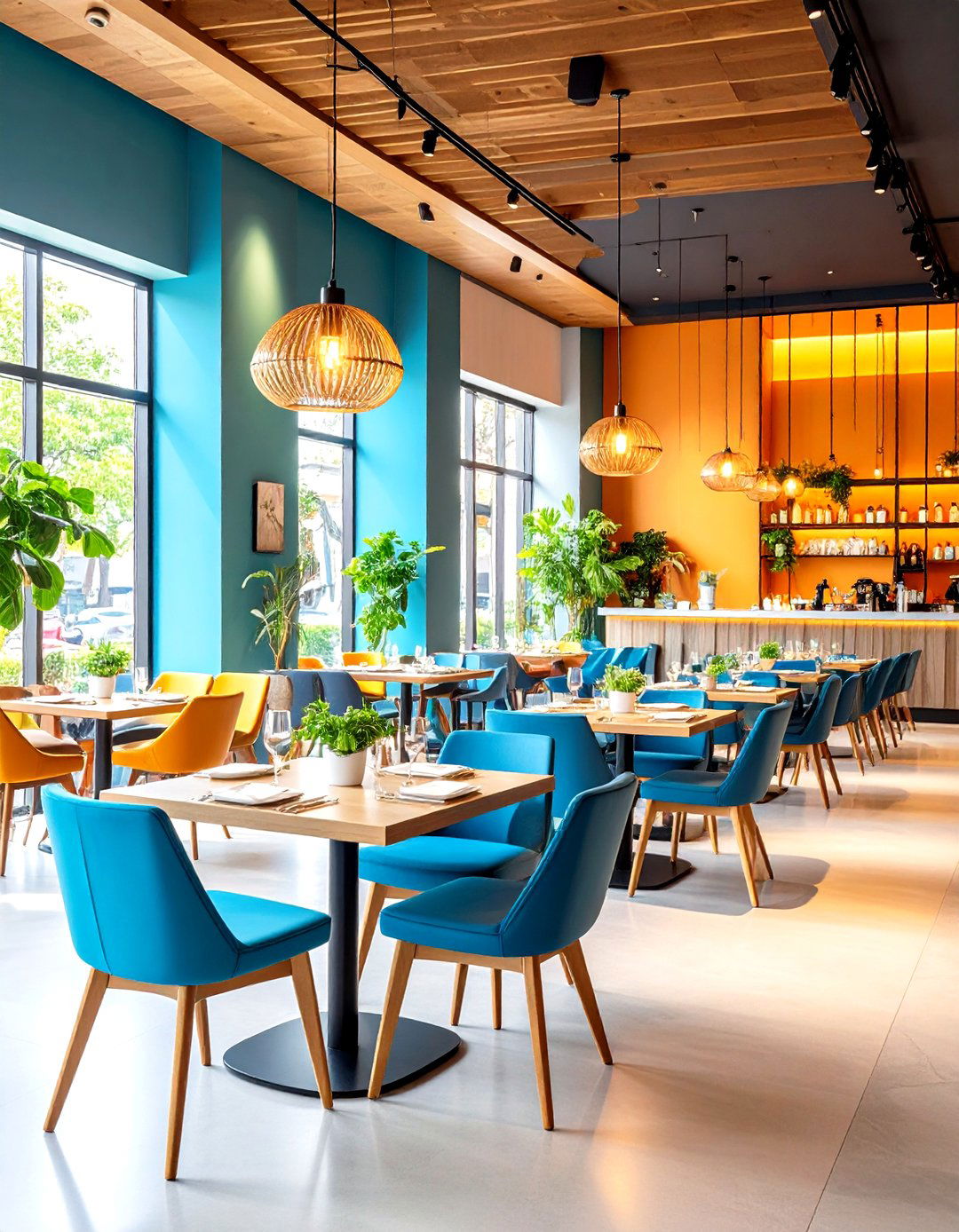
Multi-themed restaurant interior design creates diverse experiences within single venues by designing distinct zones that each offer unique atmospheres, accommodating different dining moods and occasions. This comprehensive approach features clearly defined areas such as casual lounge spaces, formal dining rooms, and interactive bar areas, each with its own design identity while maintaining overall cohesion. The furniture selection varies by zone, incorporating comfortable casual seating in lounge areas, elegant dining chairs in formal sections, and high-energy bar stools in social spaces. Lighting adapts to each theme, featuring bright, energetic illumination in casual areas, intimate pendant lighting in formal spaces, and dramatic accent lighting in bar zones. The color scheme uses a unifying palette that allows each zone to express its unique character while maintaining visual flow throughout the space. Architectural elements like partial walls, level changes, and ceiling treatments help define different areas while maintaining openness. This design creates versatile venues that can accommodate various dining experiences, from business lunches to romantic dinners to social gatherings, maximizing appeal and revenue potential.
13. Eatertainment Restaurant Interior Design
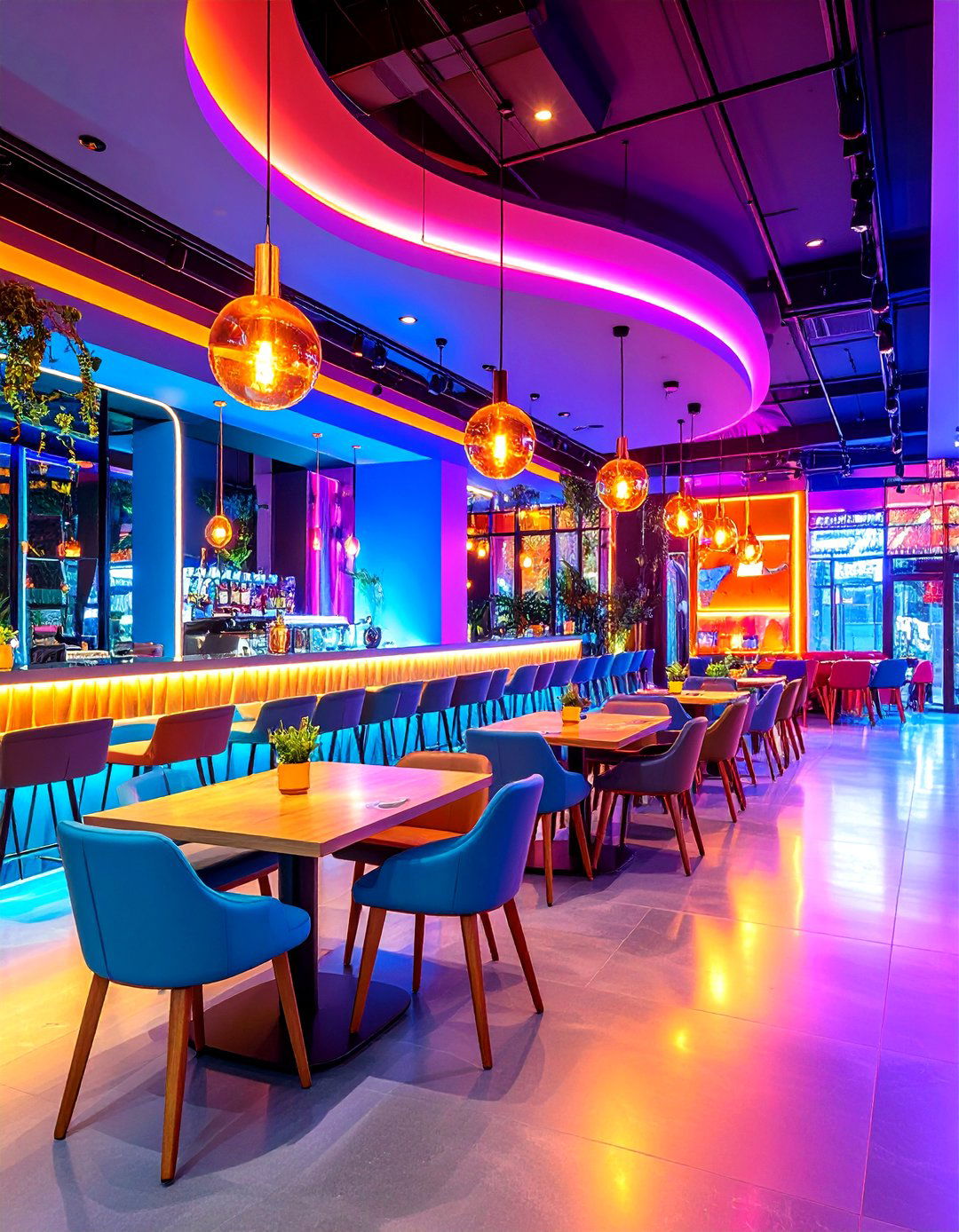
Eatertainment restaurant interior design combines dining with interactive entertainment, creating immersive experiences that engage guests beyond traditional food service through games, performances, and participatory activities. This design approach features flexible spaces that accommodate dining tables alongside entertainment areas, performance stages, and interactive gaming zones. The furniture selection emphasizes moveable pieces that can be reconfigured for different events, comfortable seating that encourages longer stays, and specialized furniture for gaming areas like high-top tables and lounge seating. Lighting incorporates entertainment-friendly systems with dimming capabilities, colorful accent lighting for gaming areas, and performance lighting for stages or demonstration areas. The color scheme features energetic, playful tones that create excitement and engagement, including bright accent colors balanced with neutral backgrounds that don't compete with entertainment elements. Sound systems and acoustic design ensure optimal audio quality for entertainment while maintaining comfortable conversation levels in dining areas. This design creates memorable, shareable experiences that encourage repeat visits and social media engagement while building community around shared entertainment experiences.
14. Luxury Fine Dining Restaurant Interior Design

Luxury fine dining restaurant interior design creates sophisticated, exclusive environments that complement exceptional cuisine through premium materials, impeccable craftsmanship, and attention to every detail. This comprehensive approach features marble surfaces, rich hardwood floors, and custom millwork that demonstrate quality and refinement. The furniture selection emphasizes handcrafted pieces with premium upholstery, comfortable chairs that encourage leisurely dining, and spacious table arrangements that provide privacy and comfort. Lighting incorporates crystal chandeliers, custom pendant fixtures, and sophisticated dimming systems that create perfect ambiance for each course. The color scheme features refined neutrals with rich accent colors, including deep jewel tones and metallic highlights that convey luxury and sophistication. Service areas are seamlessly integrated with hidden storage, professional service stations, and climate control systems that maintain optimal comfort. Acoustic design ensures quiet, intimate conversation while high-end finishes and artwork create visual interest. This design creates exclusive dining experiences that justify premium pricing while providing guests with memorable occasions that celebrate special events and sophisticated tastes.
15. Coastal Nautical Restaurant Interior Design
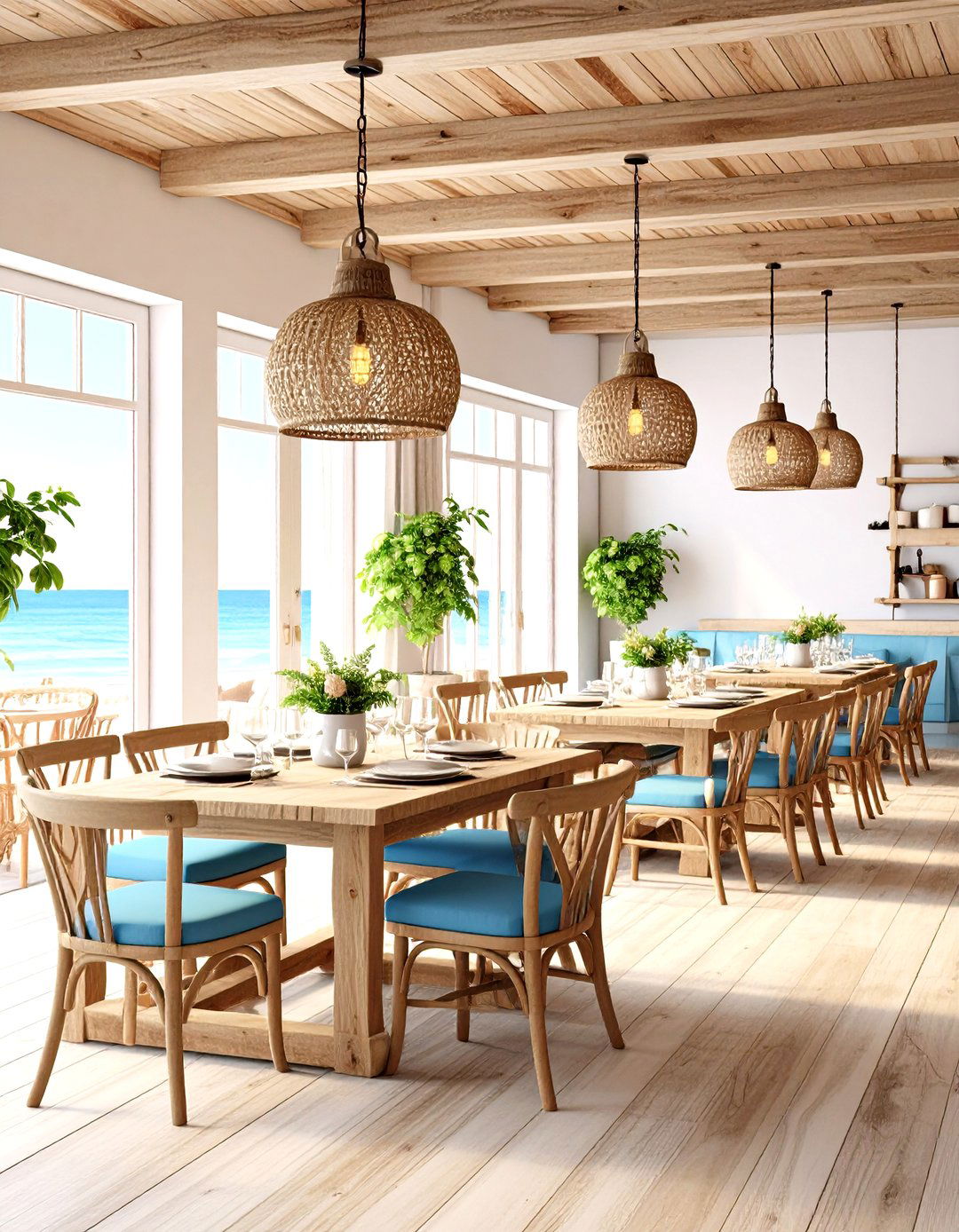
Coastal nautical restaurant interior design captures the relaxed elegance of seaside dining through marine-inspired elements, natural materials, and color palettes that evoke ocean environments. This design approach features weathered wood planking, rope details, and nautical hardware that reference maritime traditions while maintaining sophisticated aesthetics. The furniture selection emphasizes comfortable seating with marine-grade fabrics, driftwood-style tables, and banquettes that reference boat seating while providing dining comfort. Lighting incorporates lantern-style fixtures, rope-wrapped pendant lights, and natural light that mimics the bright, airy quality of coastal environments. The color scheme features ocean blues, sandy beiges, crisp whites, and sea glass greens with coral and navy accents that reference coastal landscapes. Decorative elements include nautical artwork, ship wheels, and marine artifacts that reinforce the theme without overwhelming the space. Natural materials like jute, linen, and reclaimed wood create authentic coastal texture while maintaining durability for restaurant use. This design creates relaxed, vacation-like environments that transport guests to coastal destinations while providing fresh, appealing settings for seafood and coastal cuisine.
16. Urban Loft Restaurant Interior Design
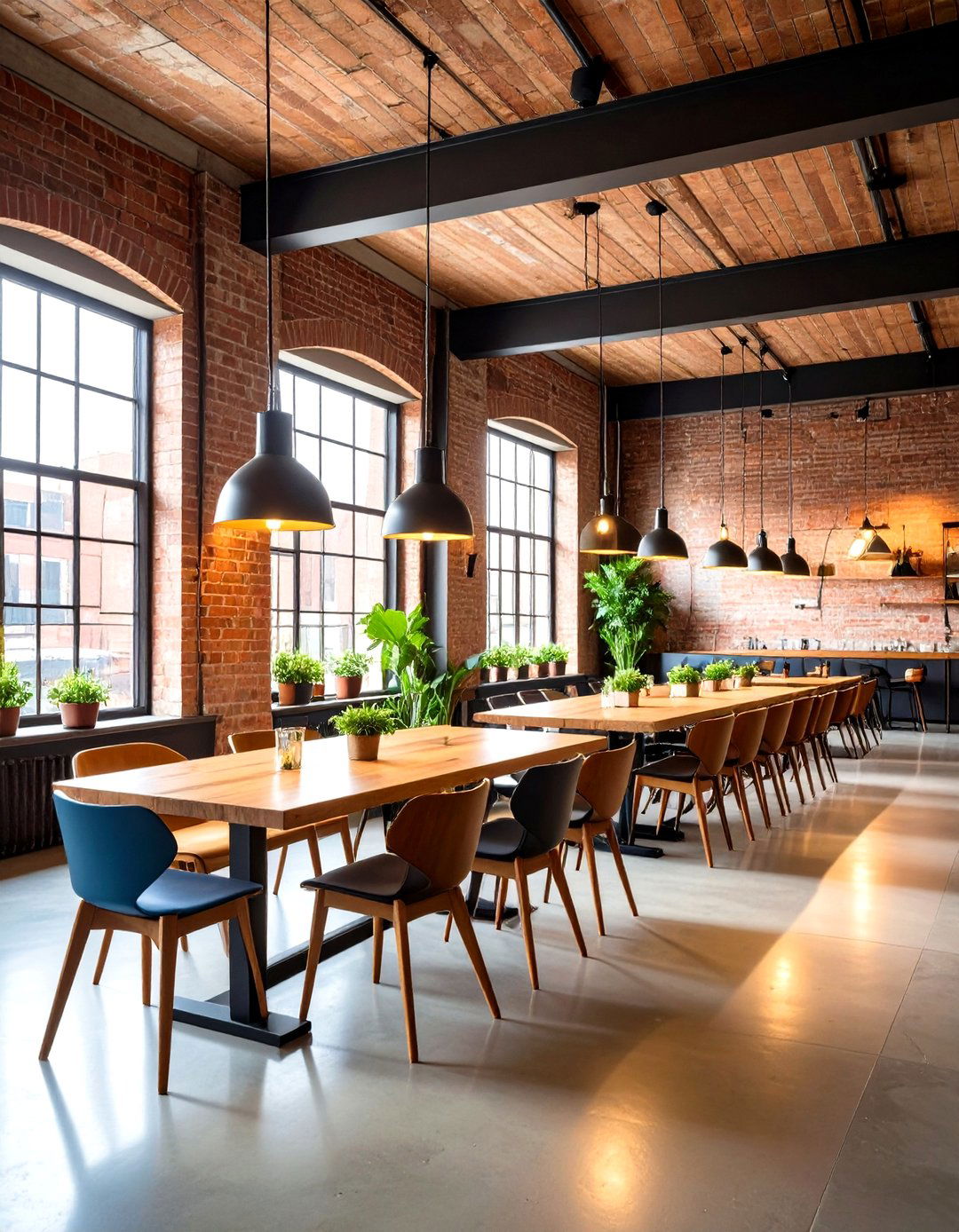
Urban loft restaurant interior design transforms industrial spaces into sophisticated dining environments that celebrate city living through exposed architectural elements, contemporary furnishings, and metropolitan aesthetics. This comprehensive approach features exposed brick walls, concrete floors, and steel beam ceilings that reference urban architecture while providing dramatic backdrops for dining. The furniture selection emphasizes contemporary pieces with clean lines, mixed materials like glass and metal, and comfortable seating that reflects urban sophistication. Lighting incorporates track lighting systems, modern pendant fixtures, and floor-to-ceiling windows that showcase city views and flood spaces with natural light. The color scheme features urban neutrals including grays, whites, and blacks with bold accent colors that reference city energy and creativity. High ceilings and open layouts create spacious, airy environments that reflect loft living while accommodating restaurant operations. Art installations and contemporary design elements celebrate urban culture and creativity. This design creates sophisticated metropolitan environments that appeal to city dwellers while providing dramatic, photogenic settings that encourage social media sharing and urban exploration.
17. Mid-Century Modern Restaurant Interior Design
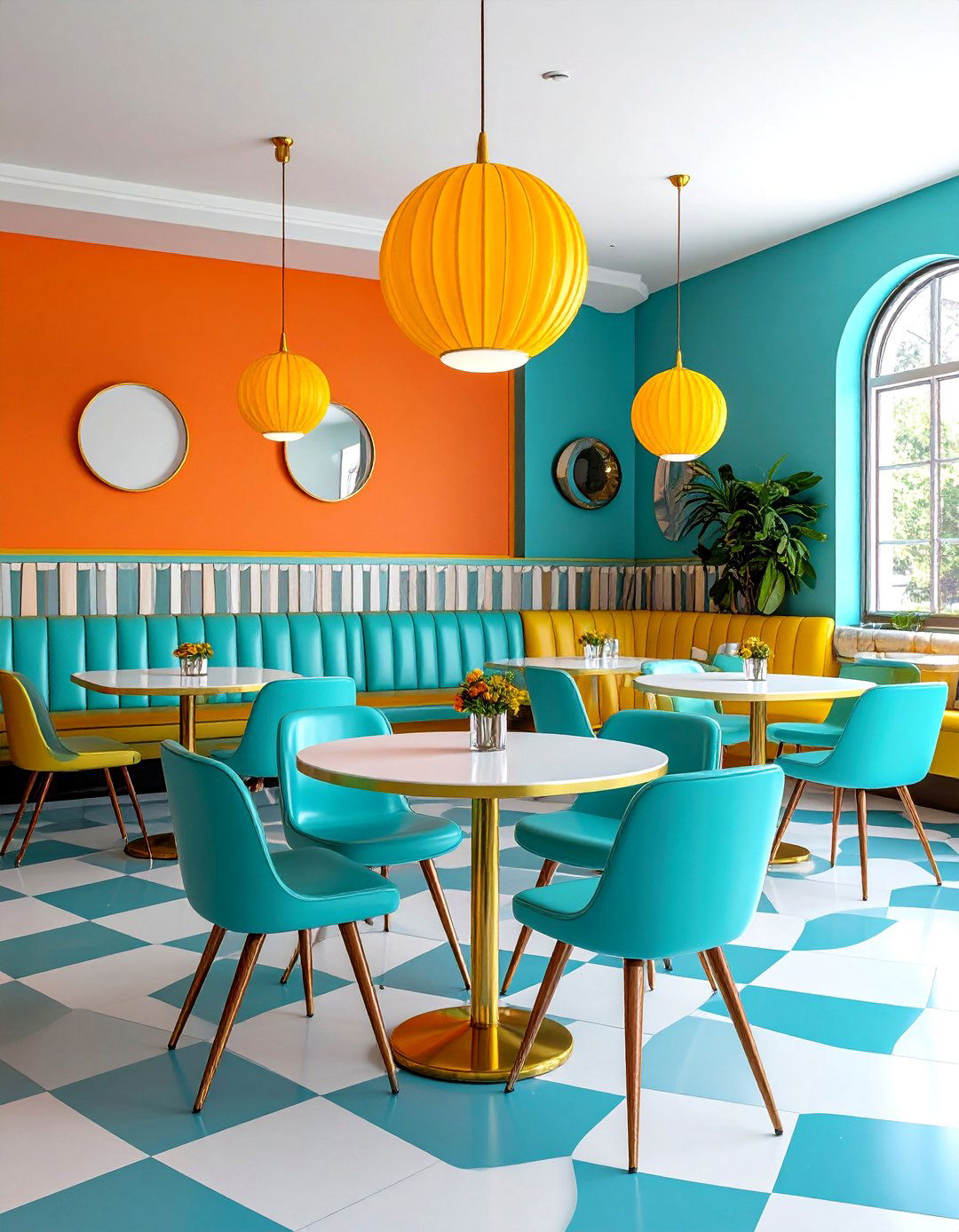
Mid-century modern restaurant interior design celebrates the optimistic aesthetics of the 1950s and 1960s through clean lines, organic forms, and bold color combinations that create timeless, sophisticated dining environments. This design approach features furniture with tapered legs, geometric patterns, and mixed materials that reference iconic mid-century pieces while providing contemporary comfort. The furniture selection emphasizes iconic seating designs, kidney-shaped tables, and built-in banquettes that reflect period aesthetics while meeting modern dining needs. Lighting incorporates statement fixtures with atomic-inspired designs, pendant lights with colorful shades, and dramatic floor lamps that create focal points throughout the space. The color scheme features bold combinations including orange and turquoise, warm woods and bright whites, and accent colors that reference the optimistic spirit of the era. Decorative elements include period-appropriate artwork, geometric patterns, and accessories that reinforce the mid-century aesthetic without creating museum-like environments. This design creates sophisticated, nostalgic environments that appeal to design enthusiasts while providing comfortable, stylish settings that celebrate American design heritage and optimistic aesthetics.
18. Botanical Garden Restaurant Interior Design
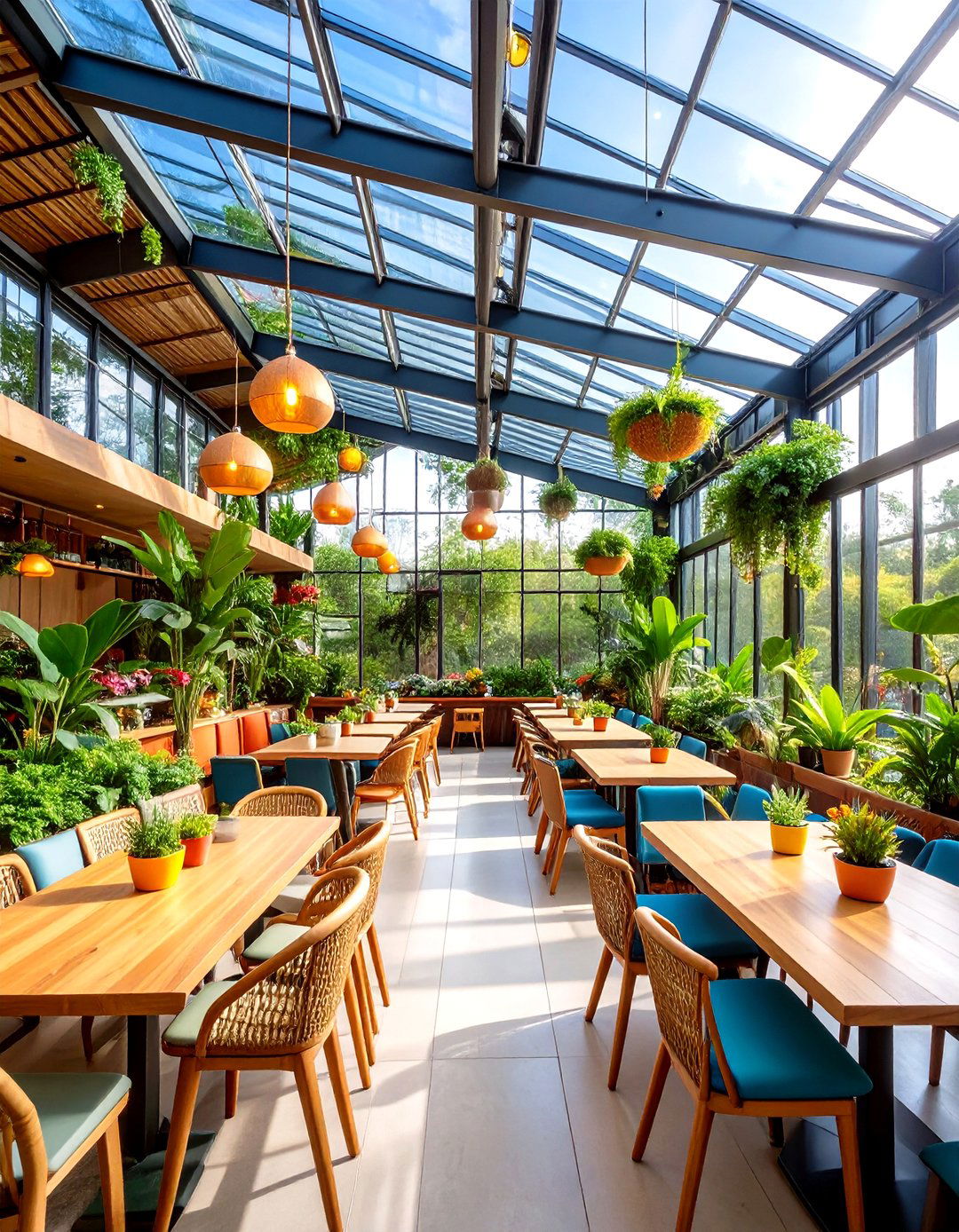
Botanical garden restaurant interior design creates immersive natural environments that surround diners with lush vegetation, creating greenhouse-like experiences that celebrate plant life and natural beauty. This comprehensive approach features living walls with diverse plant species, glass ceiling elements that optimize natural light, and garden-inspired layouts that create meandering pathways through dining areas. The furniture selection emphasizes natural materials like teak and rattan, comfortable seating that encourages contemplation, and tables positioned to maximize views of plant displays. Lighting incorporates natural illumination through skylights and large windows, supplemented by warm LED systems that support plant growth and create evening ambiance. The color scheme features various shades of green complemented by earth tones and natural wood finishes with bright floral accents that change seasonally. Climate control systems maintain optimal conditions for both plants and diners while water features provide sound and visual interest. This design creates serene, rejuvenating environments that provide escape from urban stress while celebrating the beauty of nature and creating Instagram-worthy settings that attract plant enthusiasts and nature lovers.
19. Artisanal Craft Restaurant Interior Design

Artisanal craft restaurant interior design celebrates handmade quality and traditional craftsmanship through custom-built elements, local artisan collaborations, and materials that showcase human skill and creativity. This design approach features handcrafted furniture, custom ceramic tiles, and artisan-made fixtures that demonstrate quality and uniqueness while supporting local craft communities. The furniture selection emphasizes pieces made by local craftspeople, unique designs that can't be found elsewhere, and materials that improve with age and use. Lighting incorporates handblown glass fixtures, ceramic pendant lights, and custom metalwork that showcases artisan skills while providing functional illumination. The color scheme features warm, organic tones that complement handmade materials, including natural wood stains, earth-inspired pottery colors, and textile dyes that reference traditional craft processes. Display areas showcase the work of local artisans, rotating exhibitions that keep the space fresh, and craft demonstrations that engage diners in the creative process. This design creates authentic, community-focused environments that celebrate local talent while providing unique dining experiences that can't be replicated in chain restaurants.
20. Technology-Integrated Restaurant Interior Design
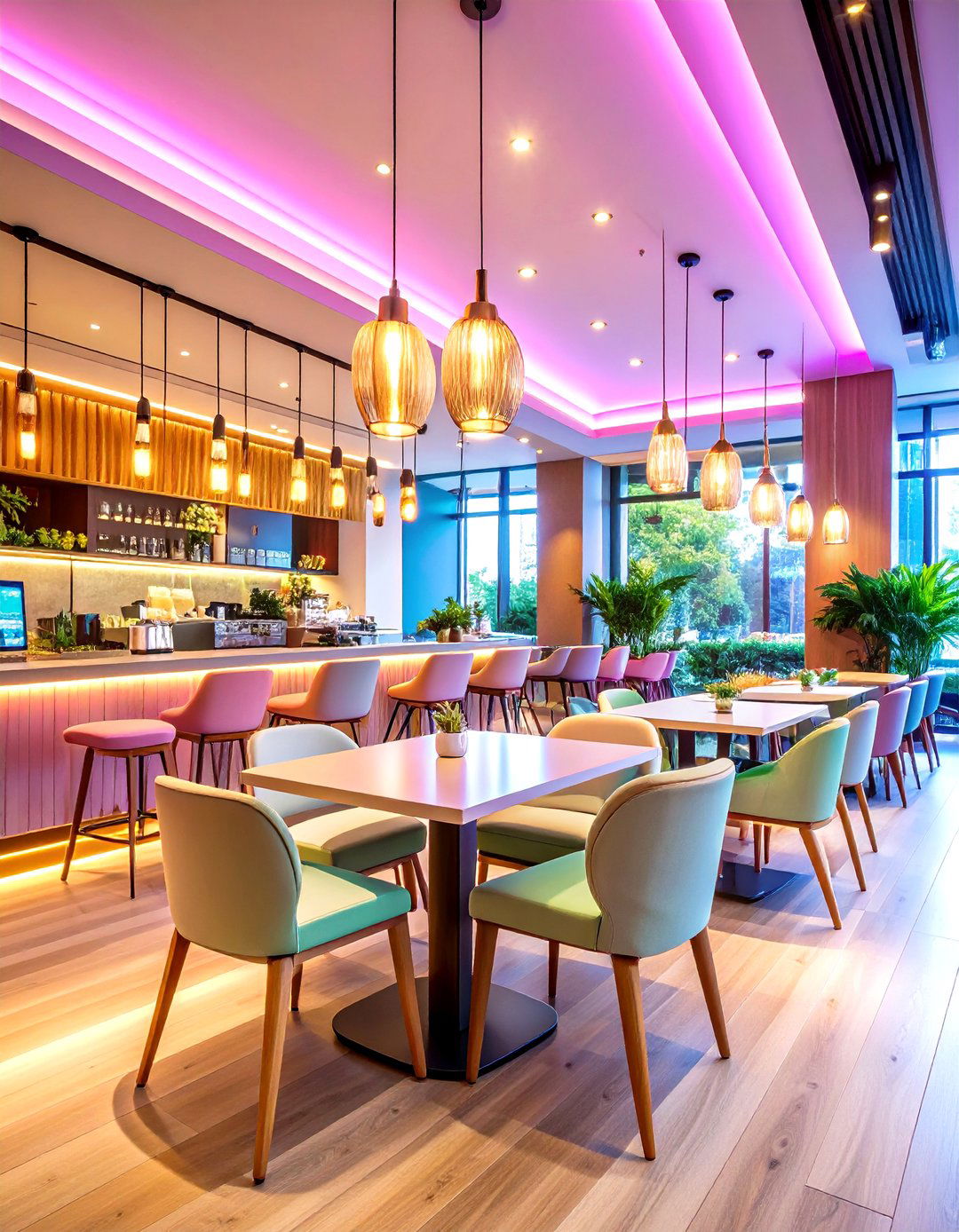
Technology-integrated restaurant interior design seamlessly incorporates digital elements and smart systems to enhance dining experiences while maintaining aesthetic appeal and human connection. This comprehensive approach features digital menu boards, interactive table surfaces, and ordering systems that streamline service while providing entertainment and convenience. The furniture selection emphasizes pieces with built-in charging stations, tables with embedded technology, and seating that accommodates device use while encouraging social interaction. Lighting incorporates smart LED systems with color-changing capabilities, automated dimming that responds to time of day, and dramatic effects that can be customized for different events. The color scheme features contemporary neutrals that don't compete with screen displays, balanced with accent colors that can be echoed in digital lighting effects. Sound systems provide ambient music and can support interactive experiences while maintaining conversation-friendly noise levels. Infrastructure includes robust Wi-Fi, integrated power systems, and climate control that responds to occupancy levels. This design creates forward-thinking environments that appeal to tech-savvy diners while demonstrating innovation and efficiency in restaurant operations.
Conclusion:
Today's restaurant interior design landscape offers endless possibilities for creating memorable dining experiences that extend far beyond food service. Whether embracing sustainable practices, celebrating local craftsmanship, or integrating cutting-edge technology, successful designs must balance aesthetic appeal with functional efficiency. The key lies in selecting design approaches that authentically reflect brand identity while meeting evolving customer expectations for Instagram-worthy, experiential dining. These diverse interior design concepts demonstrate that restaurants can differentiate themselves through thoughtful space design, creating environments that encourage longer stays, repeat visits, and positive word-of-mouth marketing essential for long-term success.


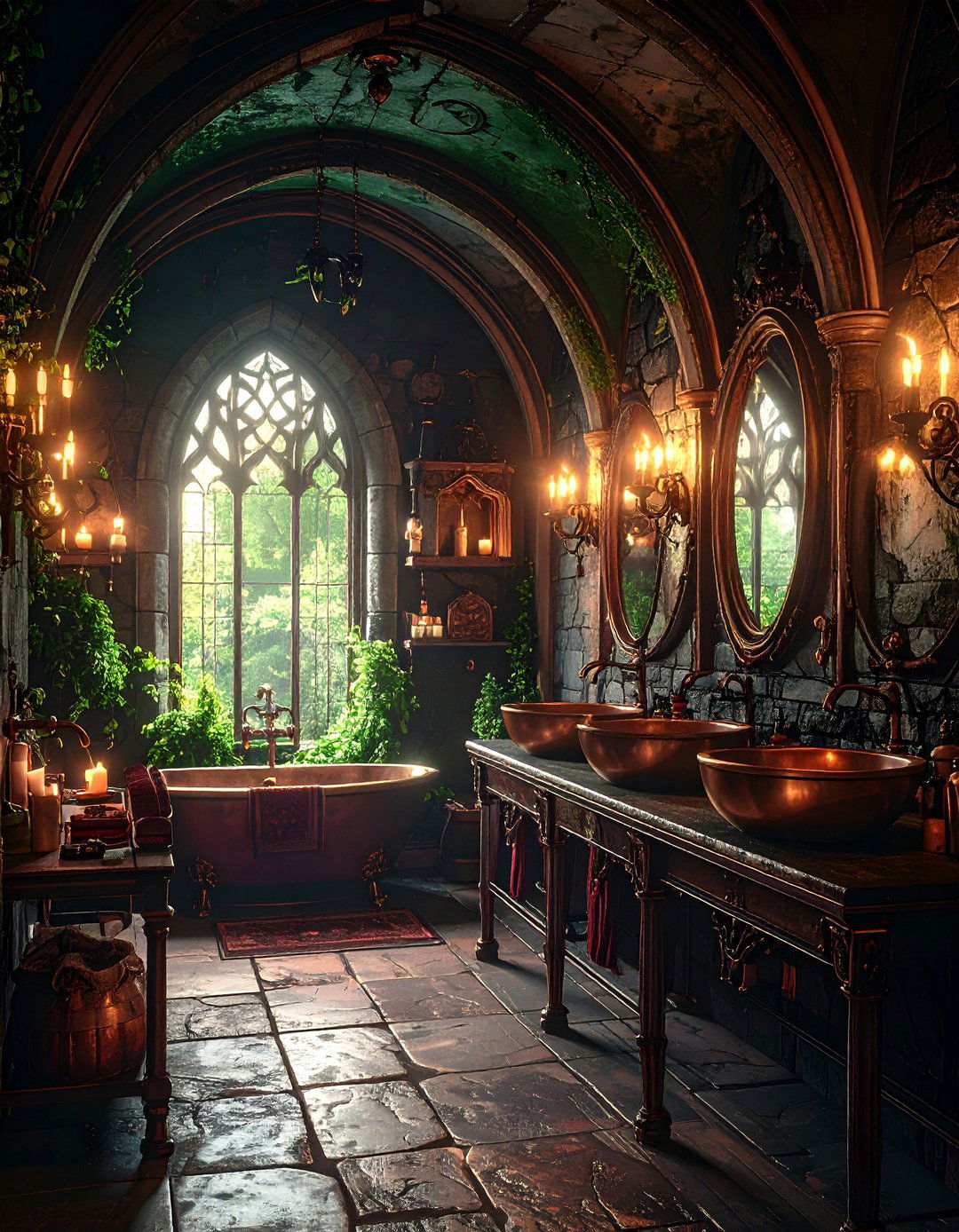

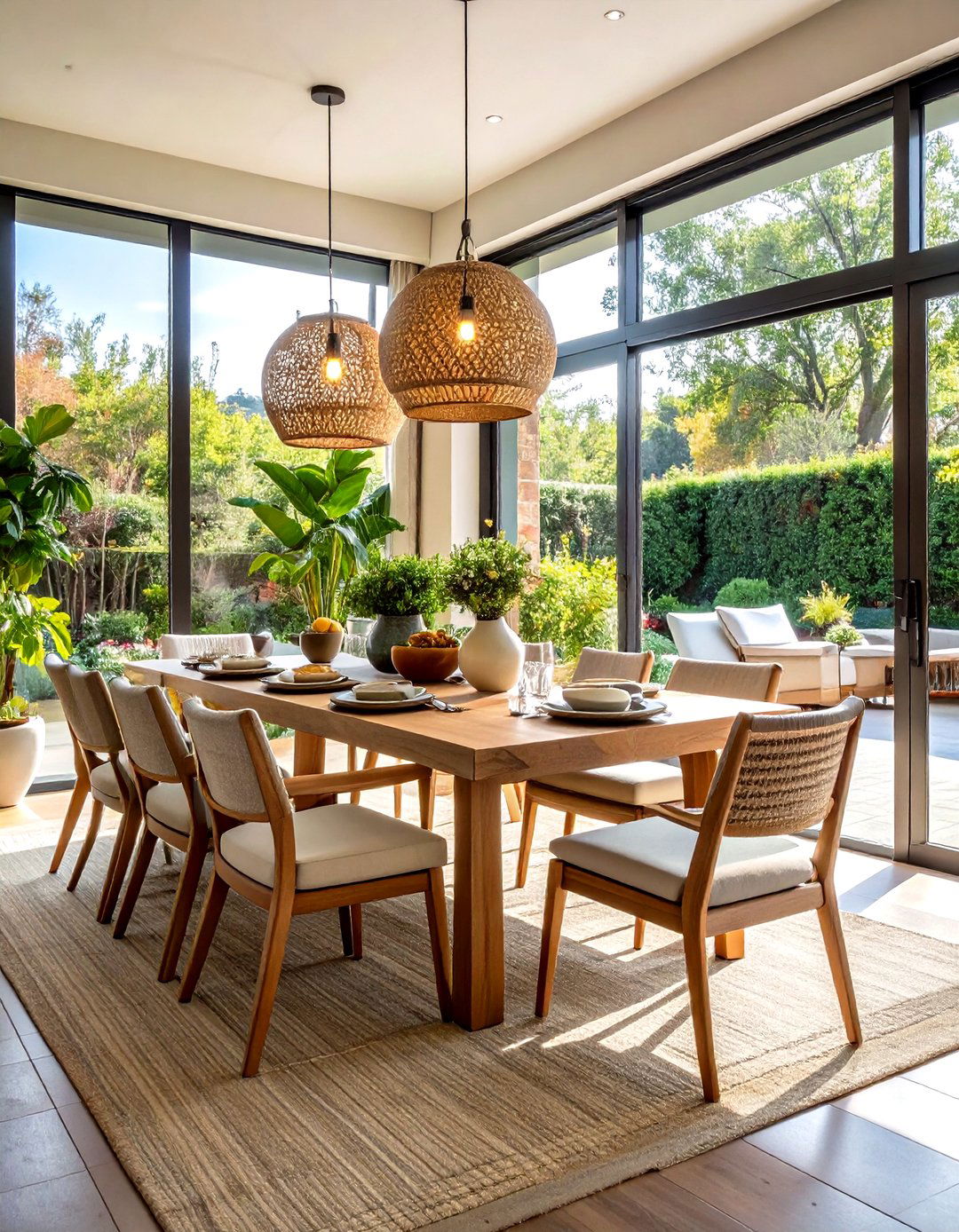
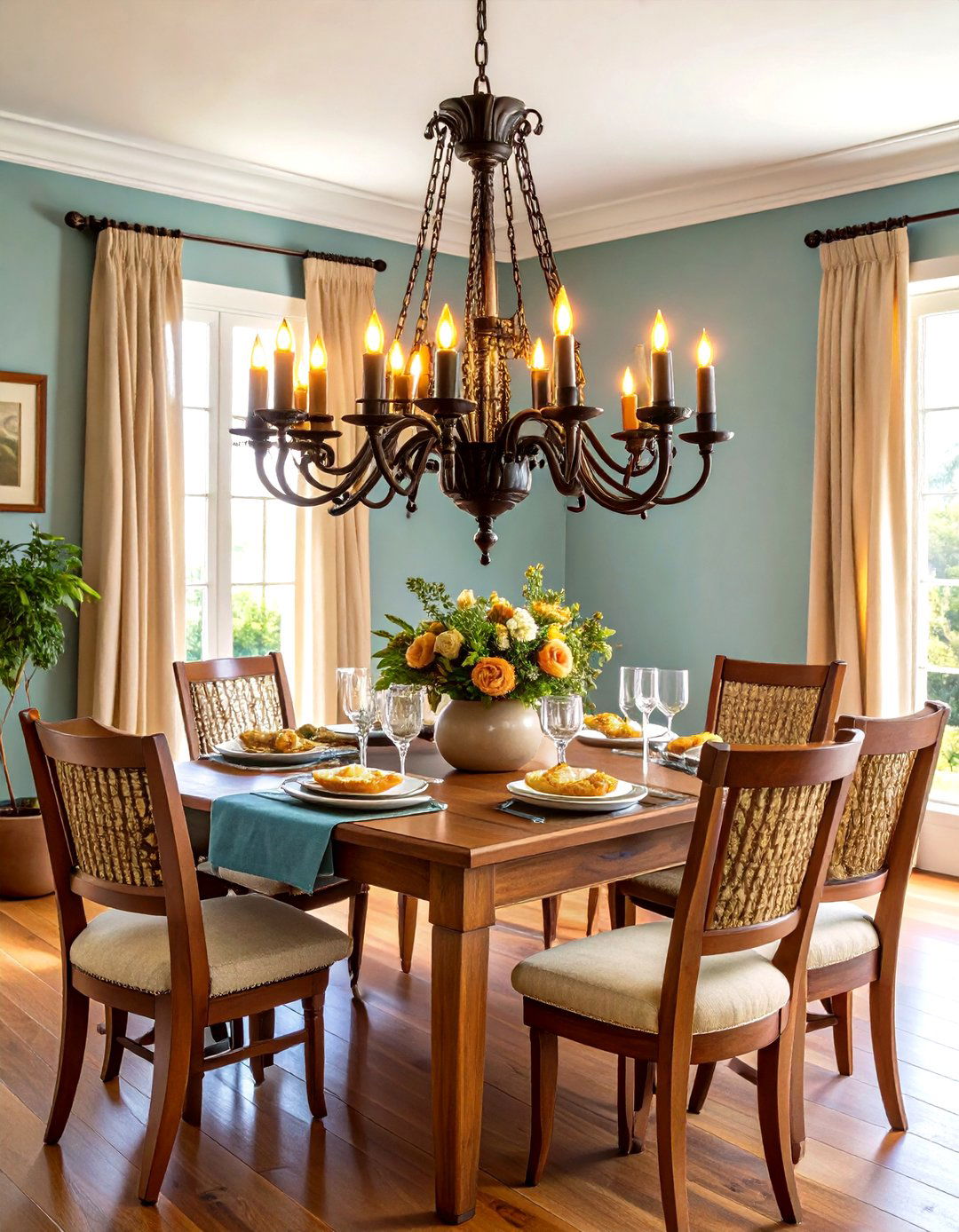
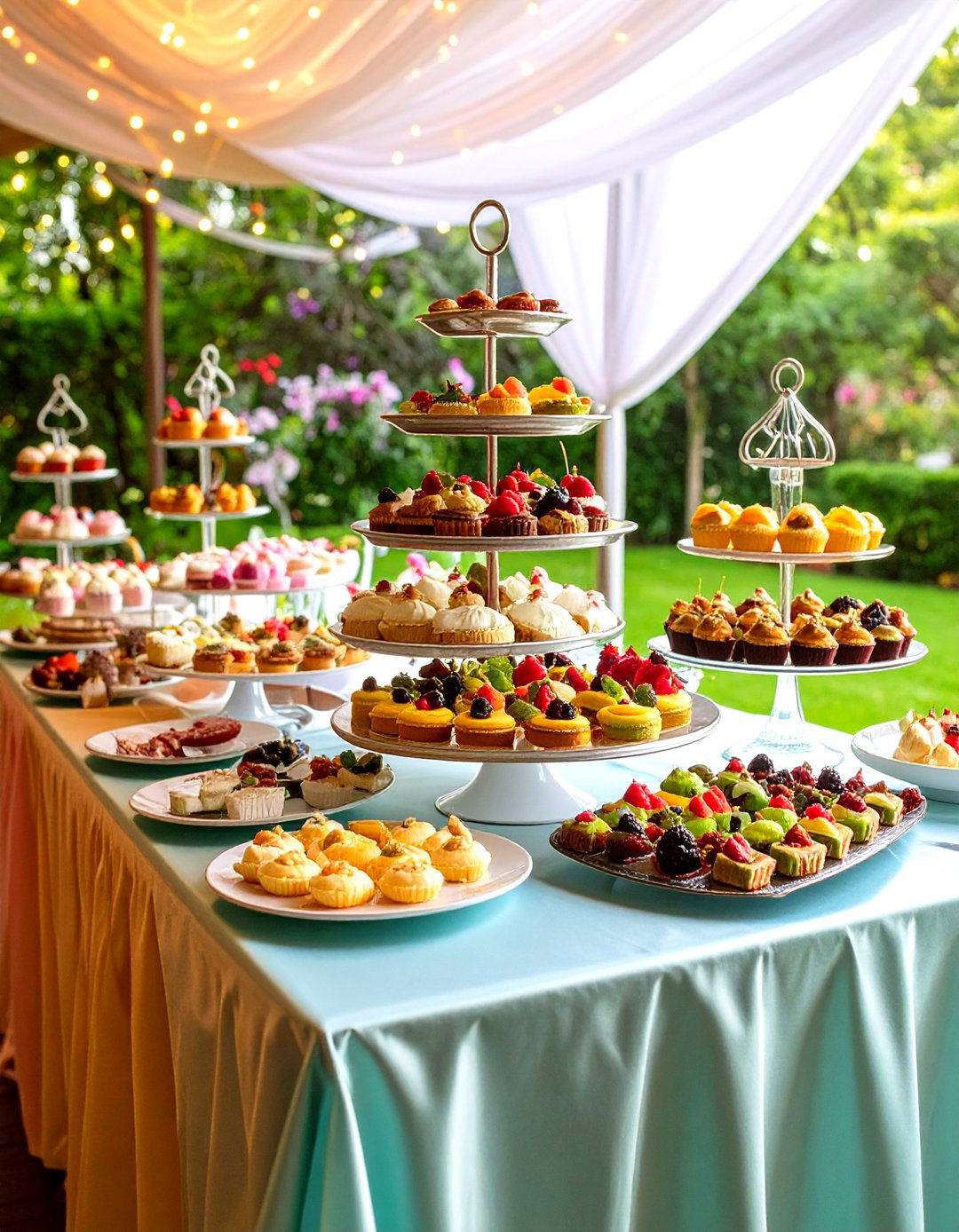
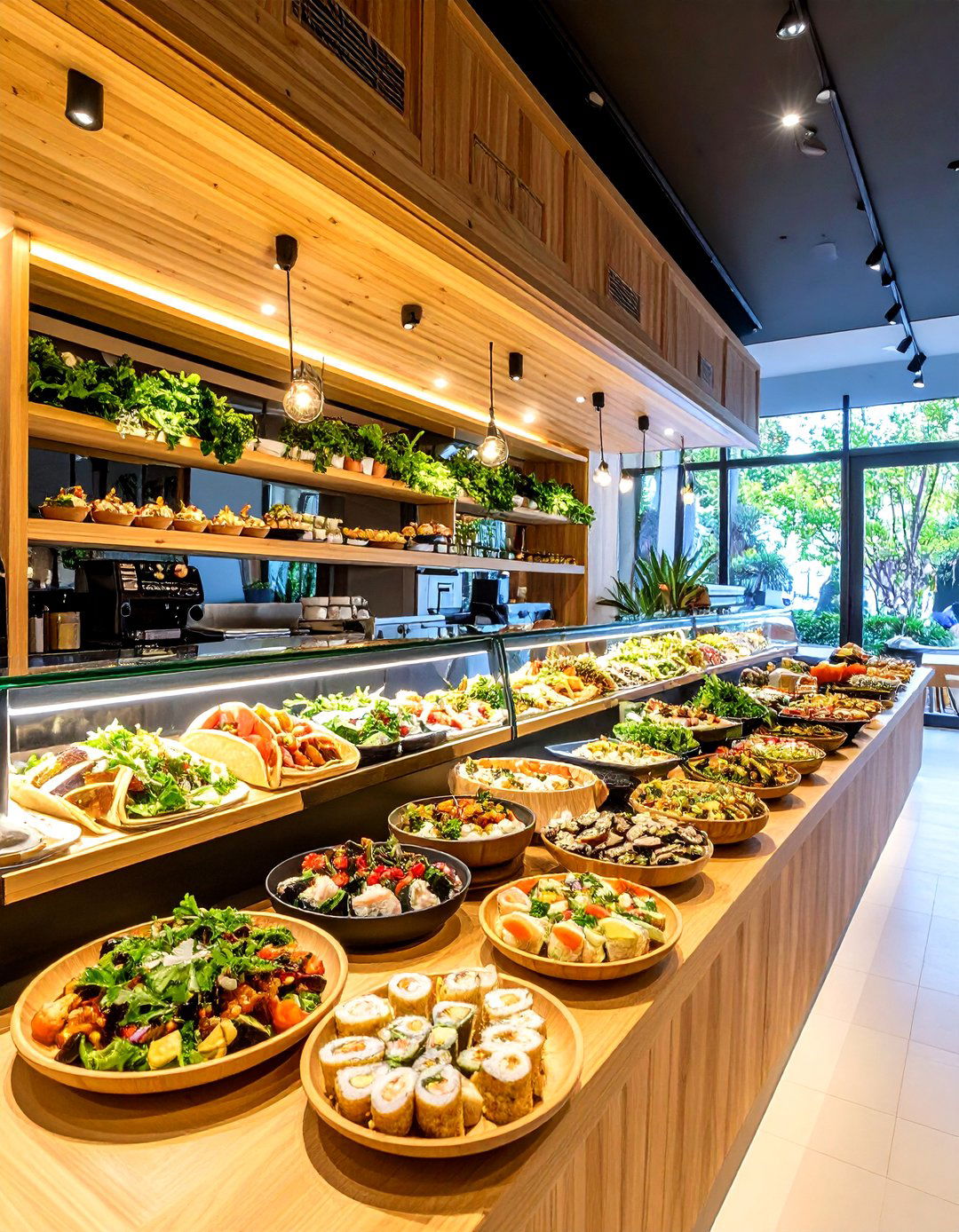
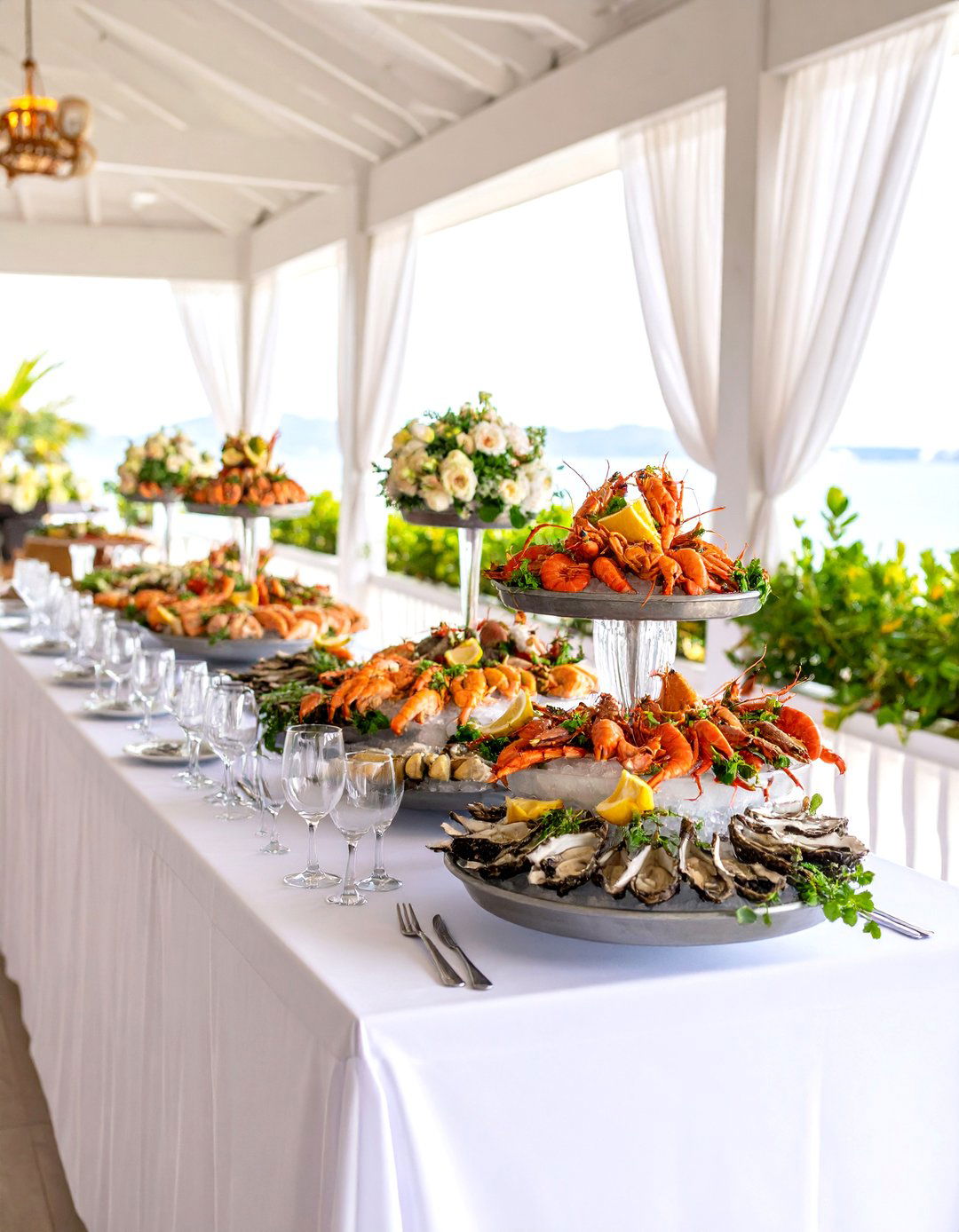
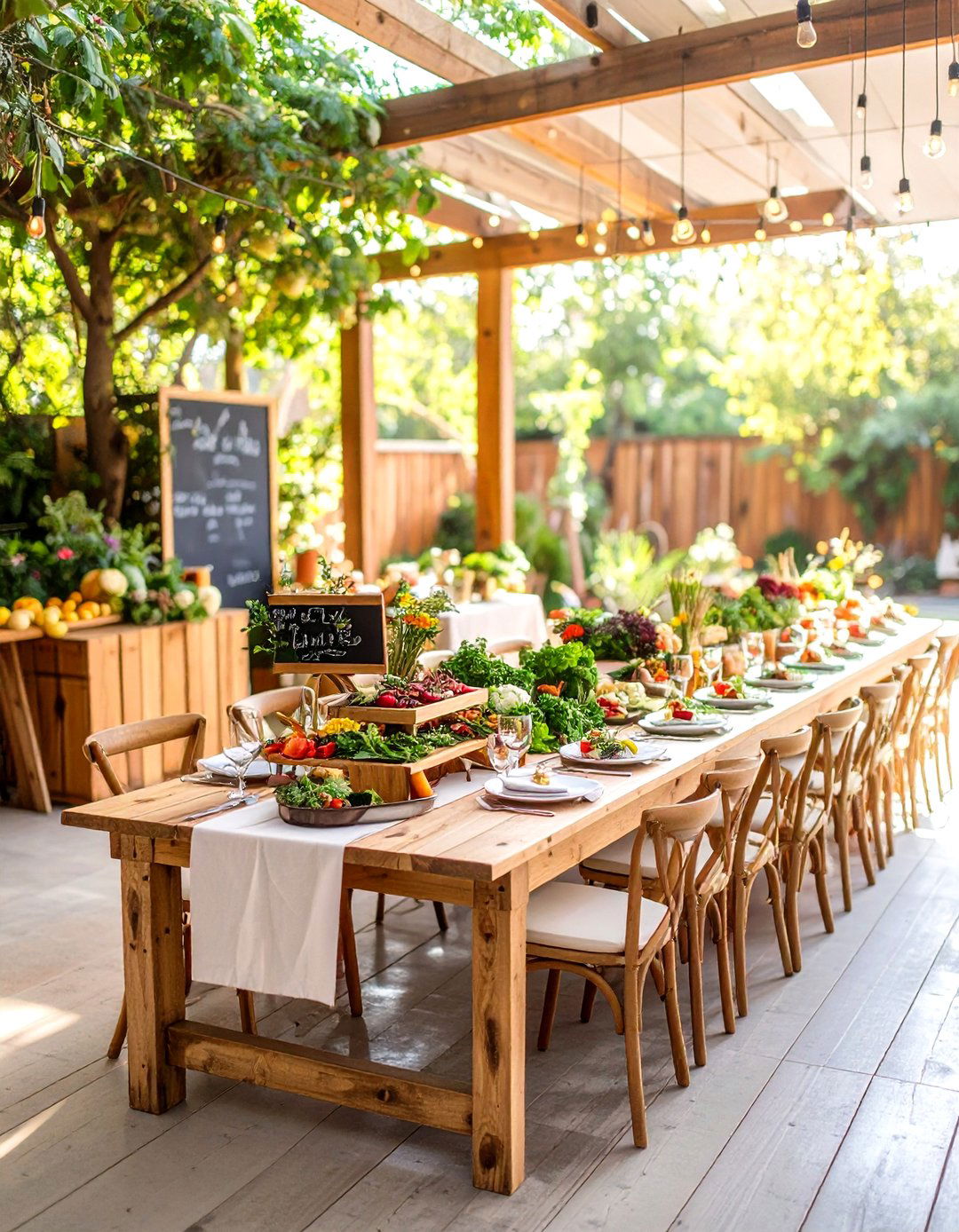
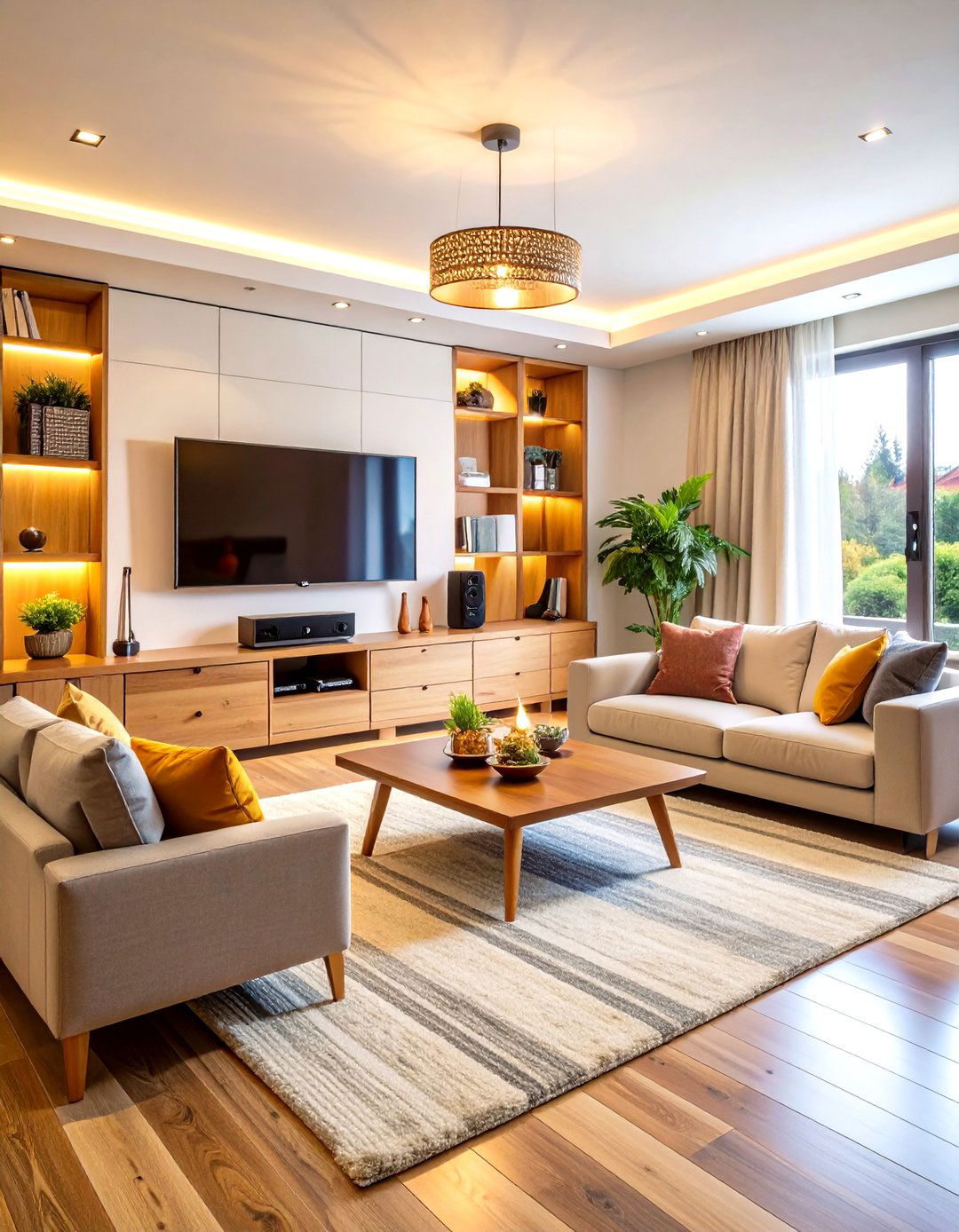

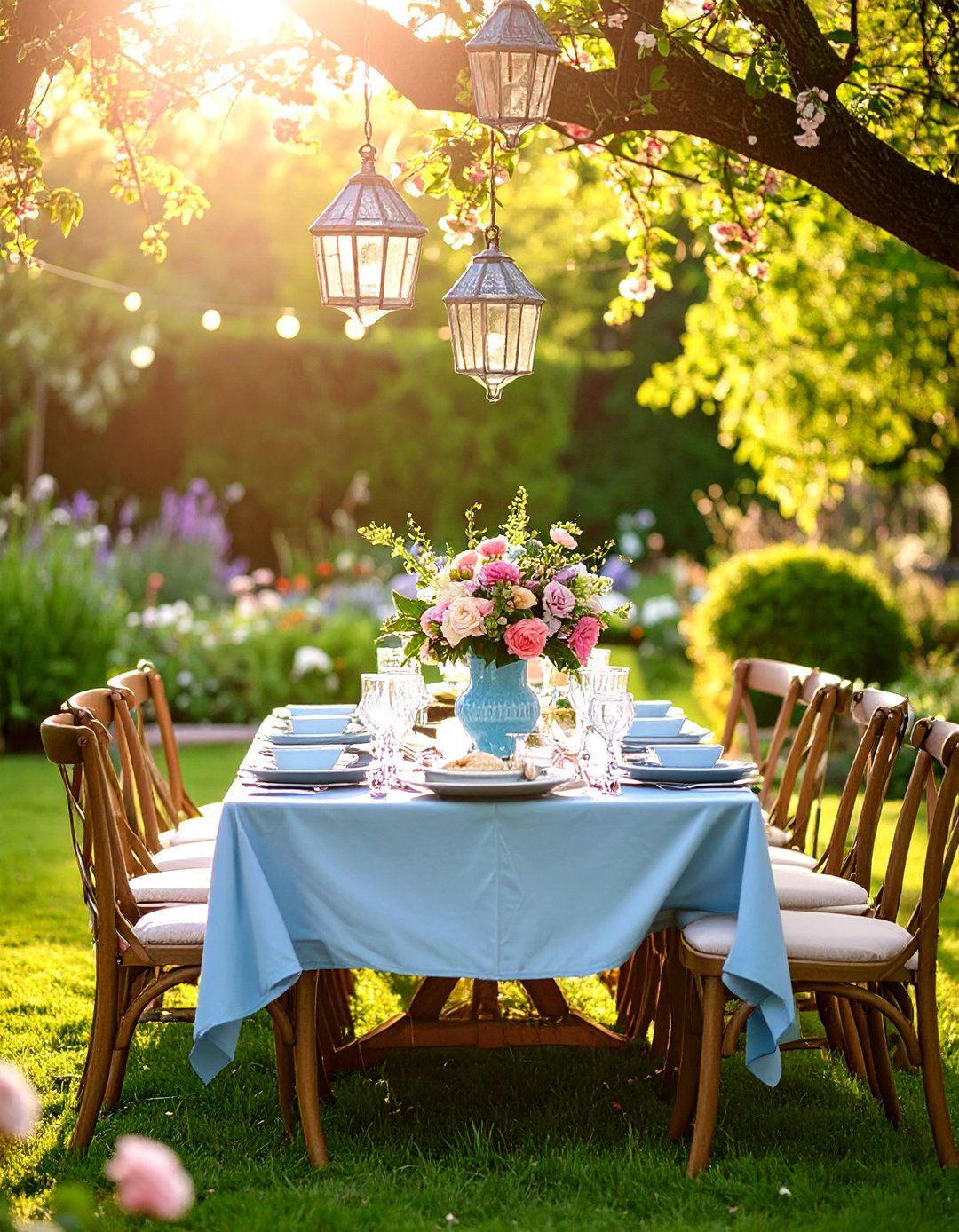
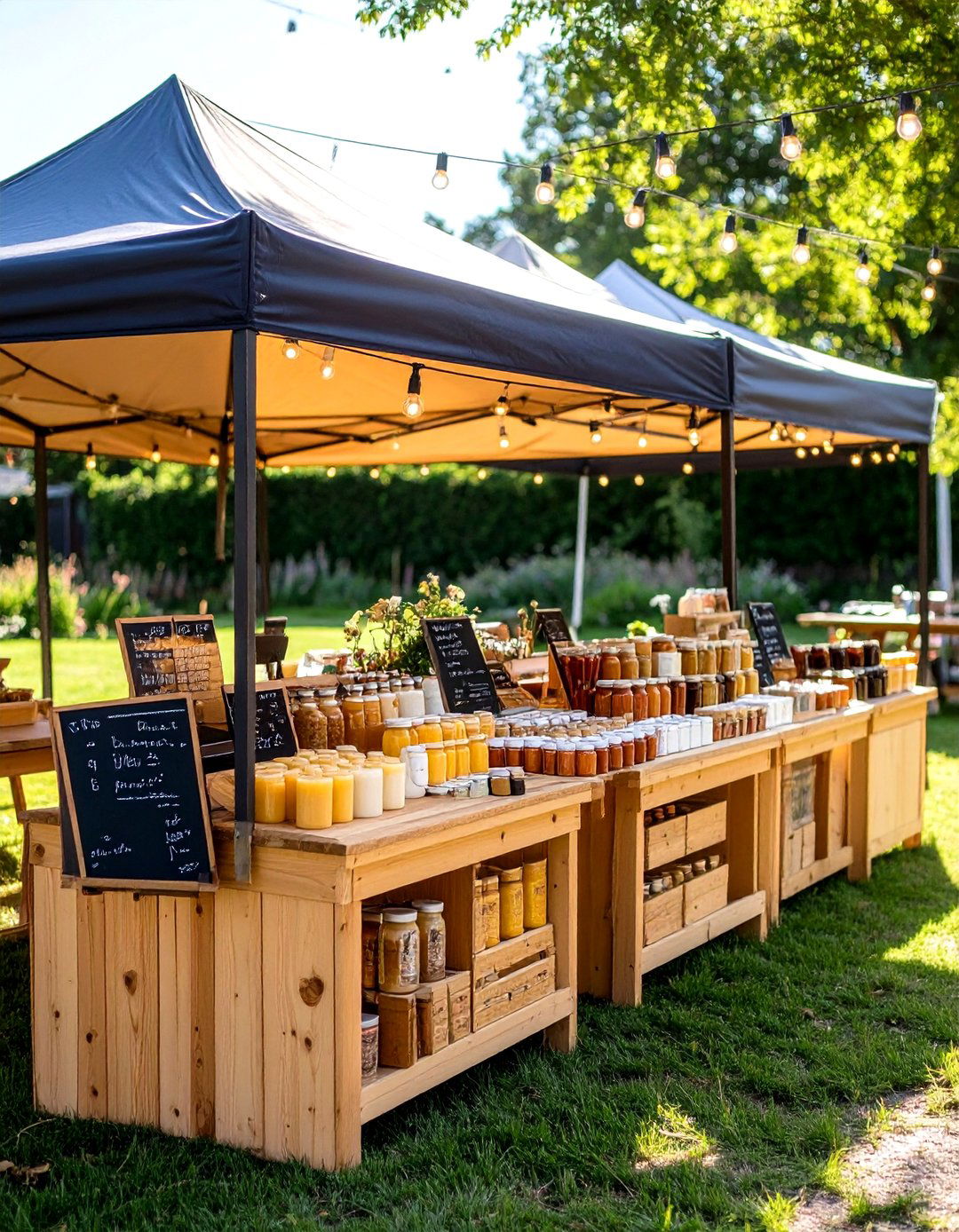
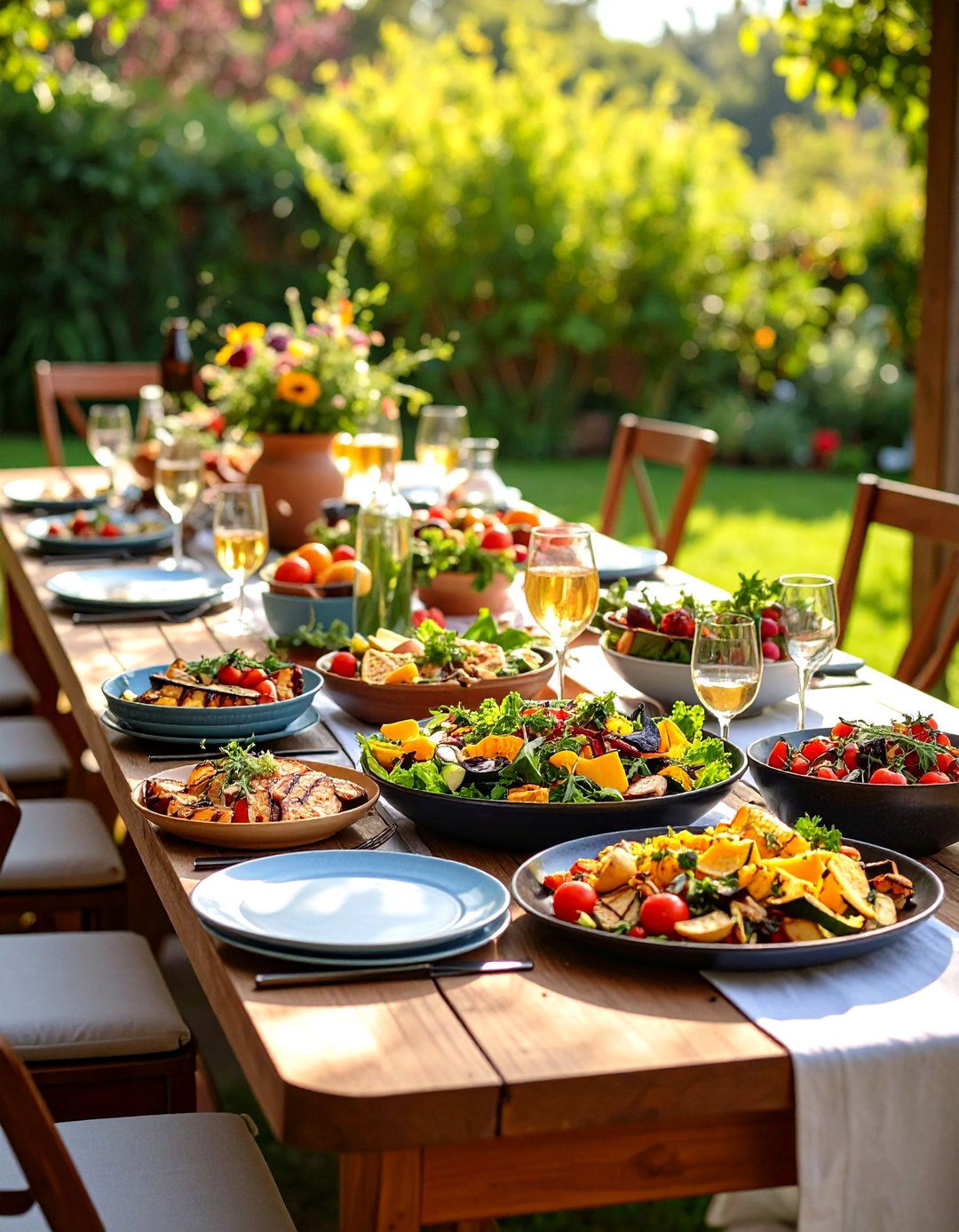
Leave a Reply